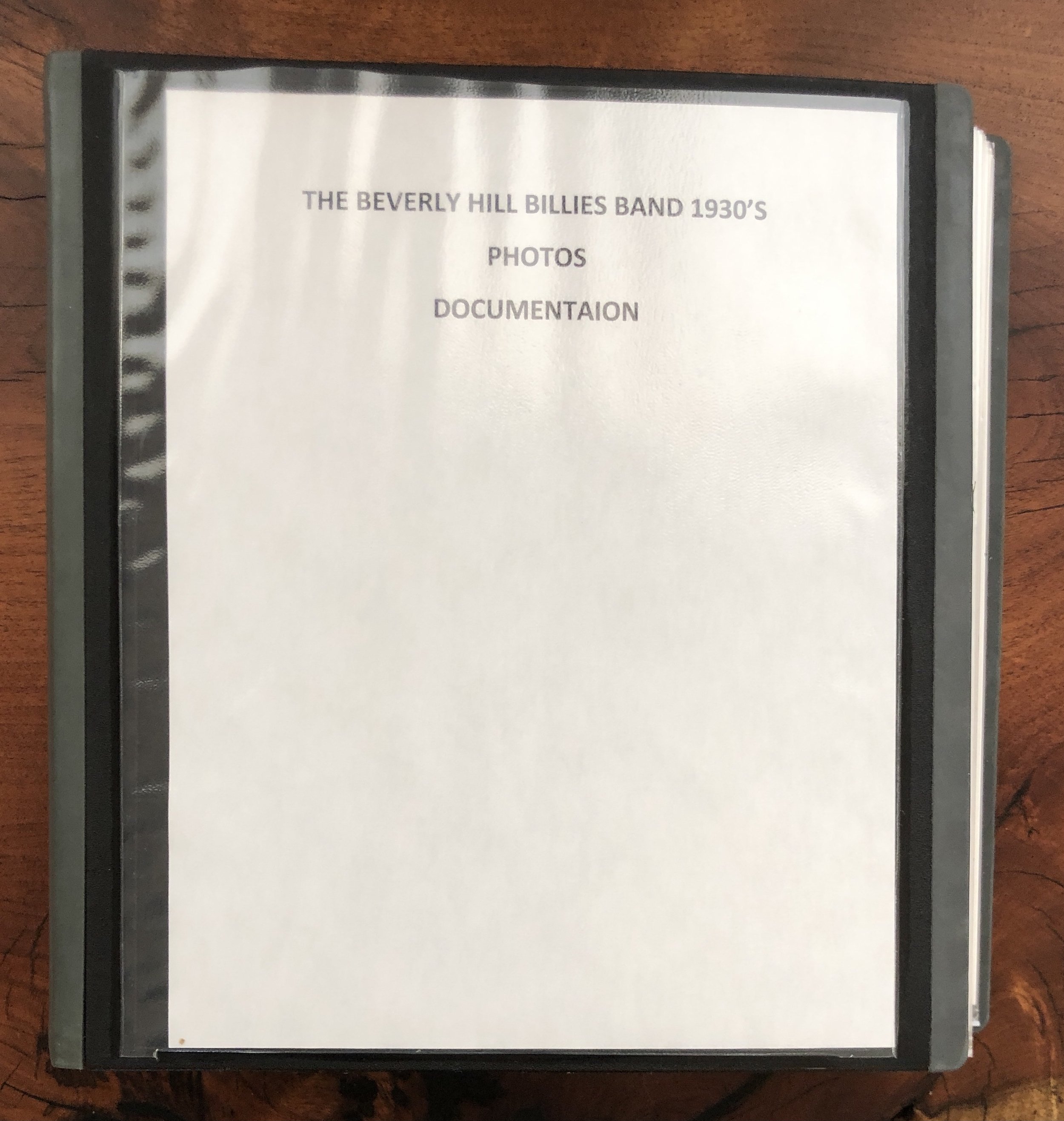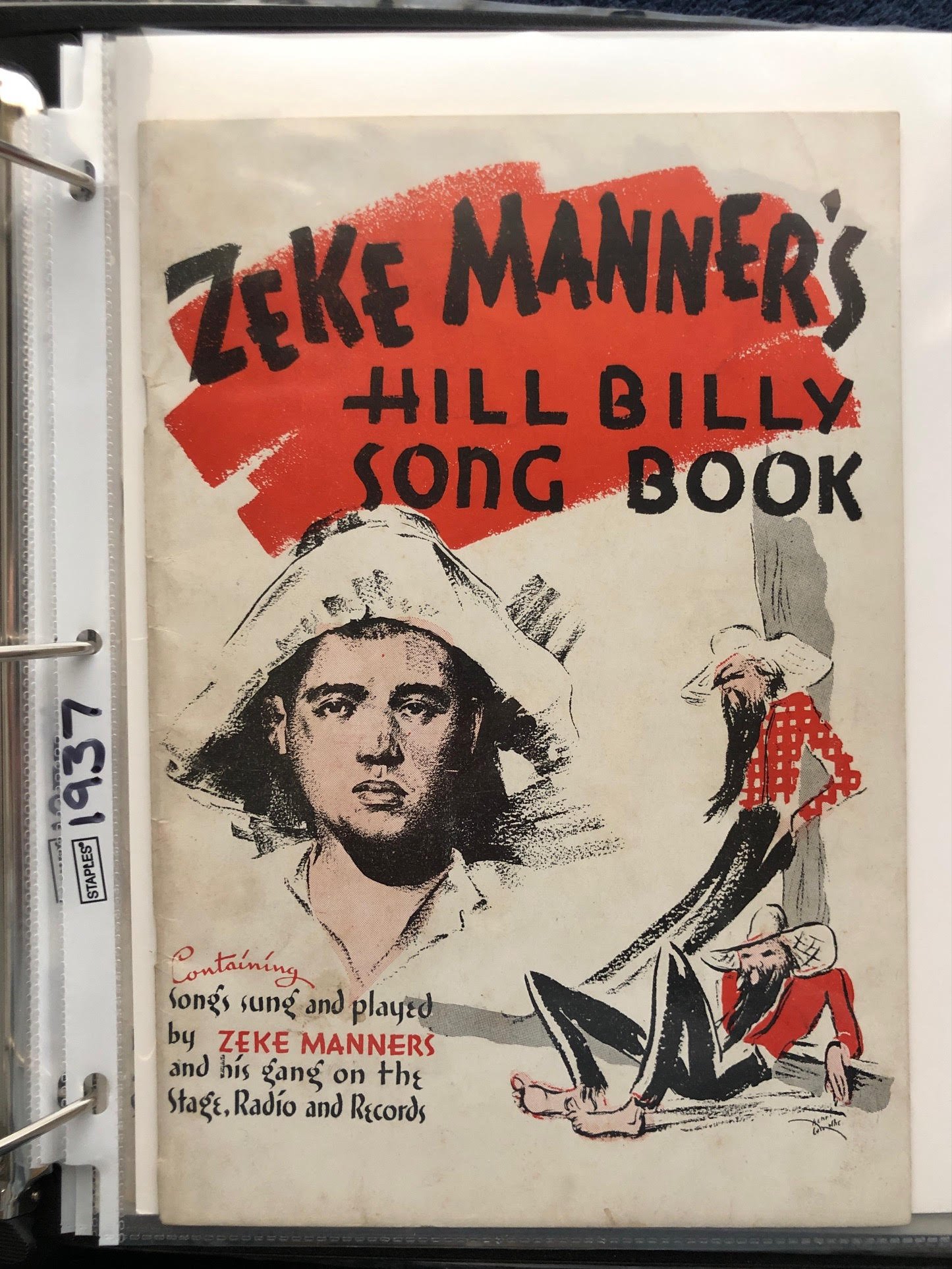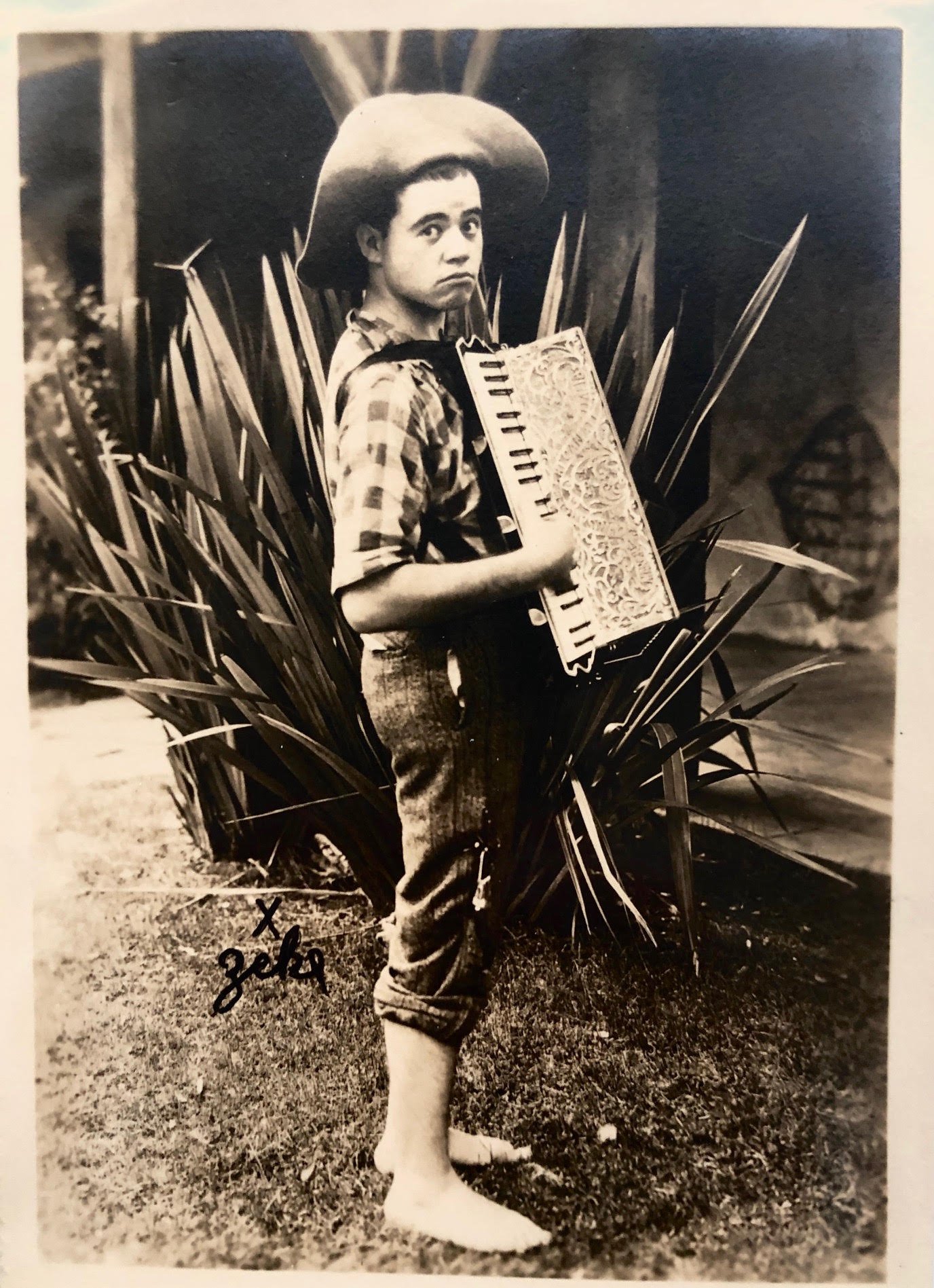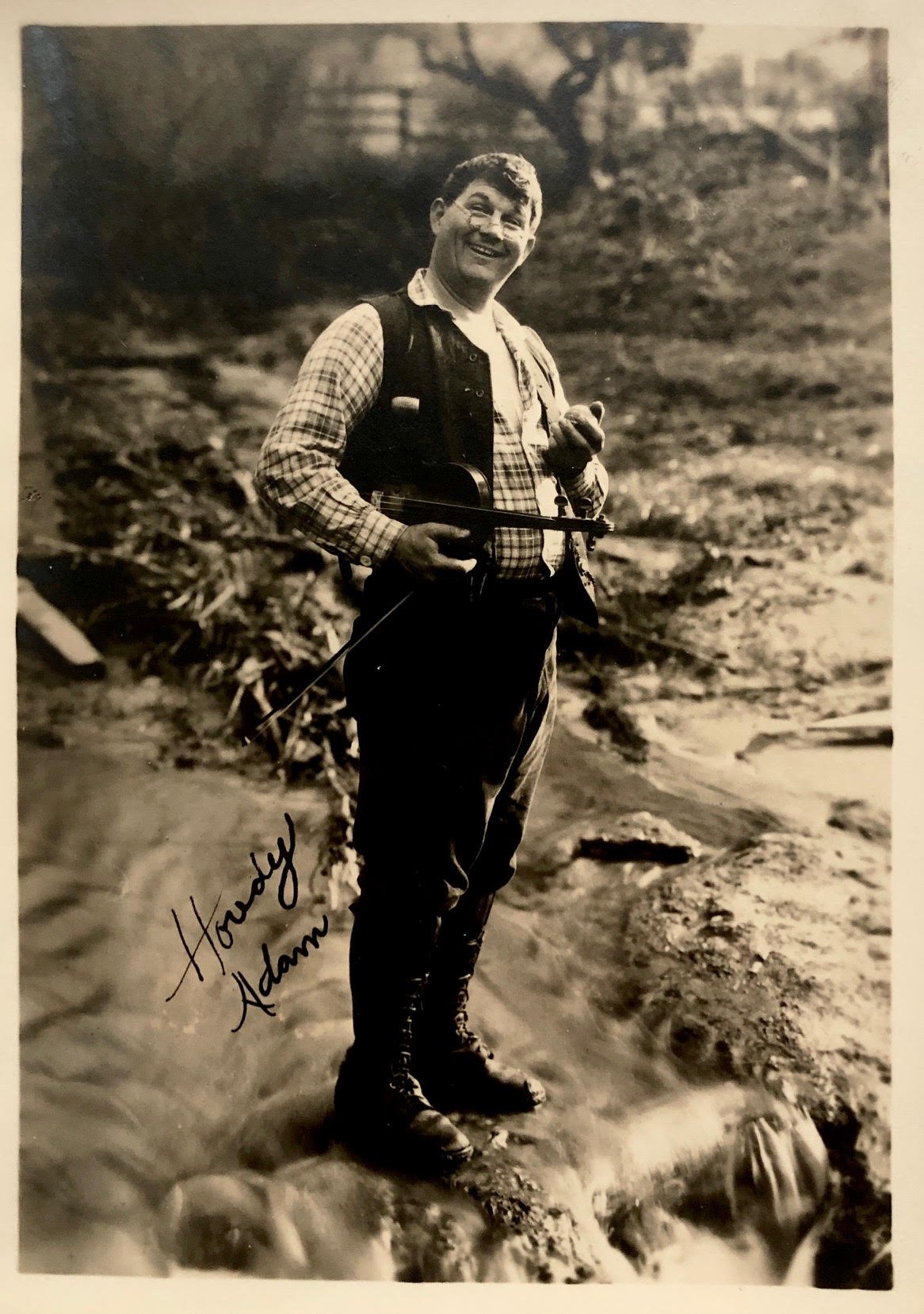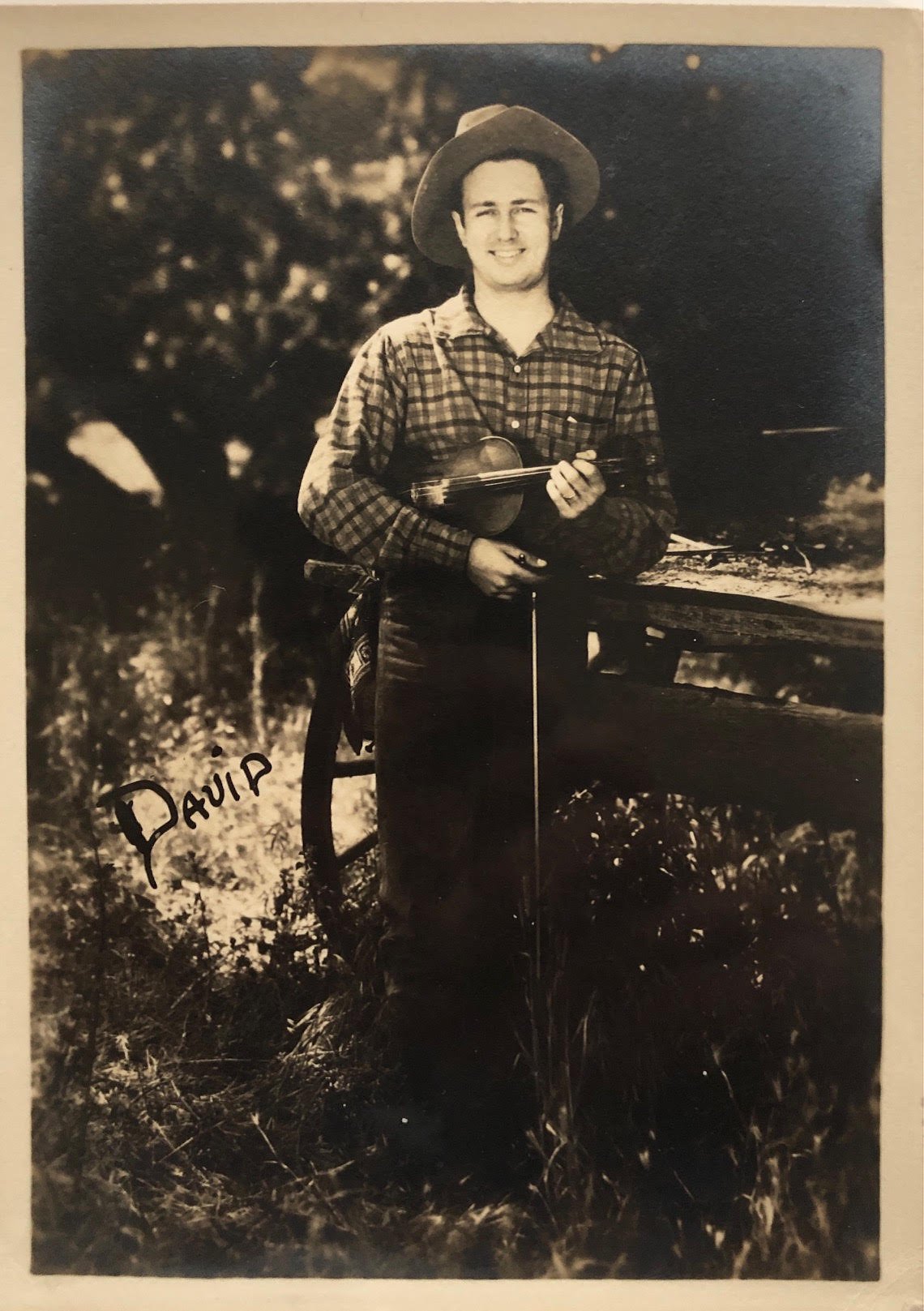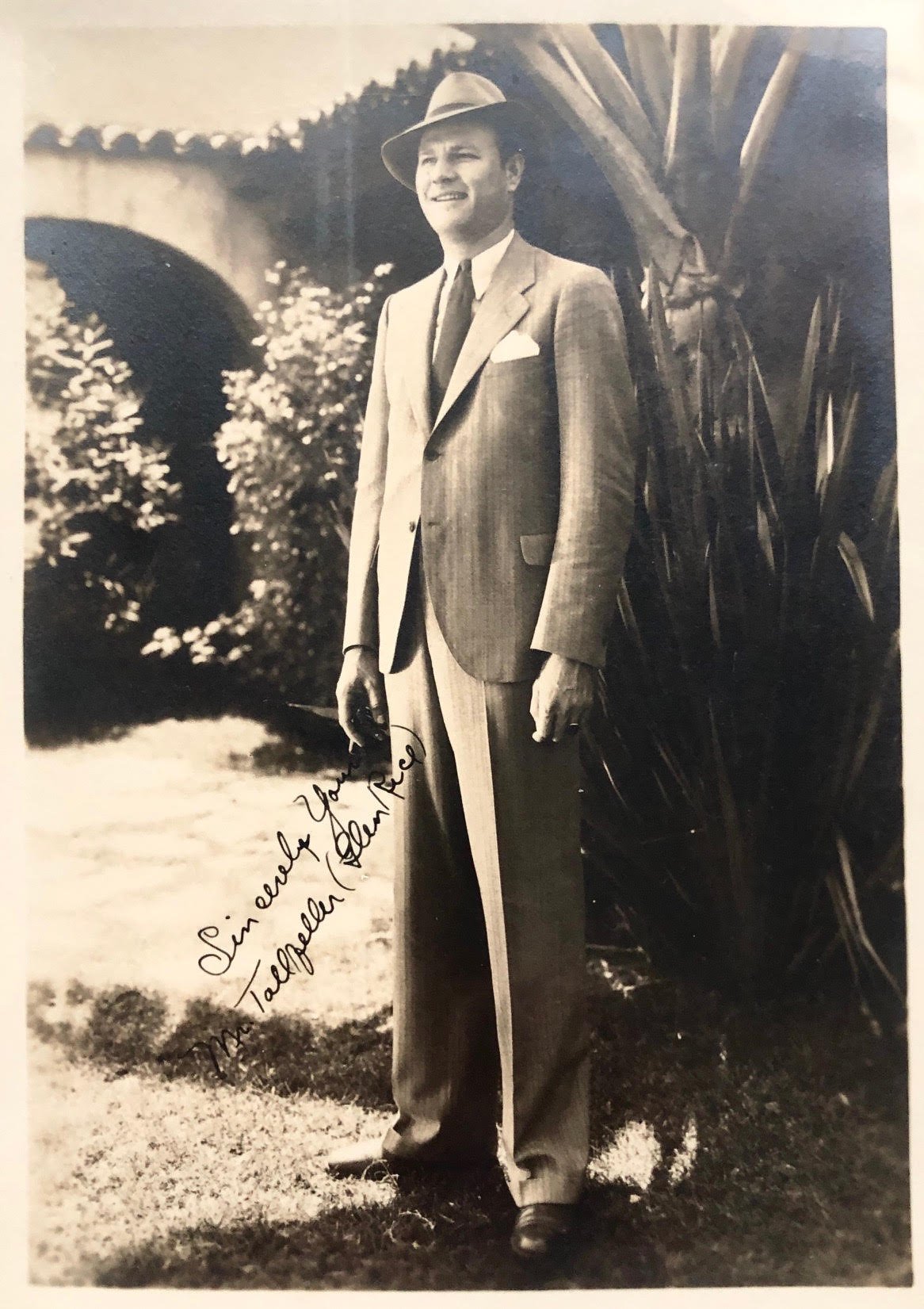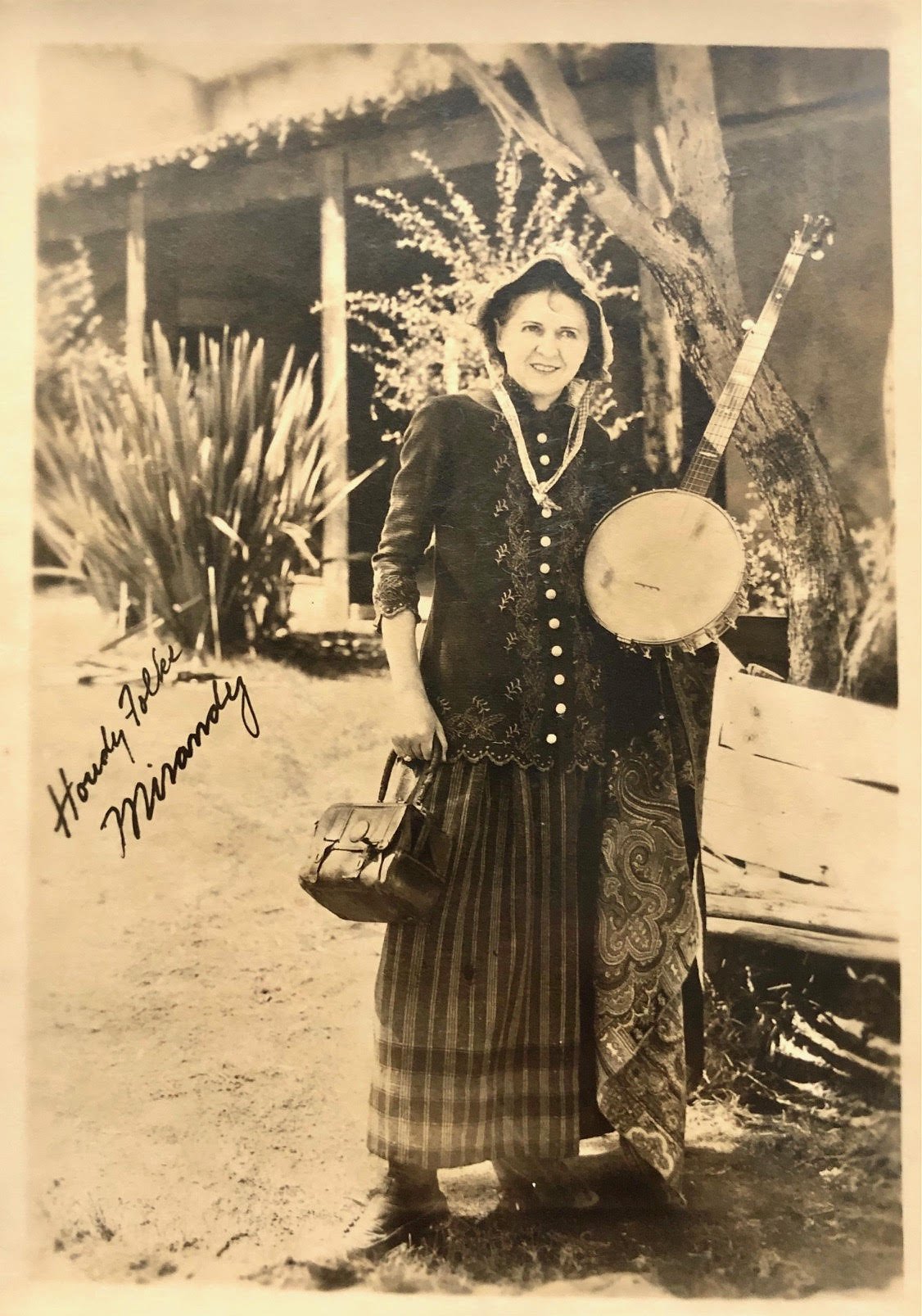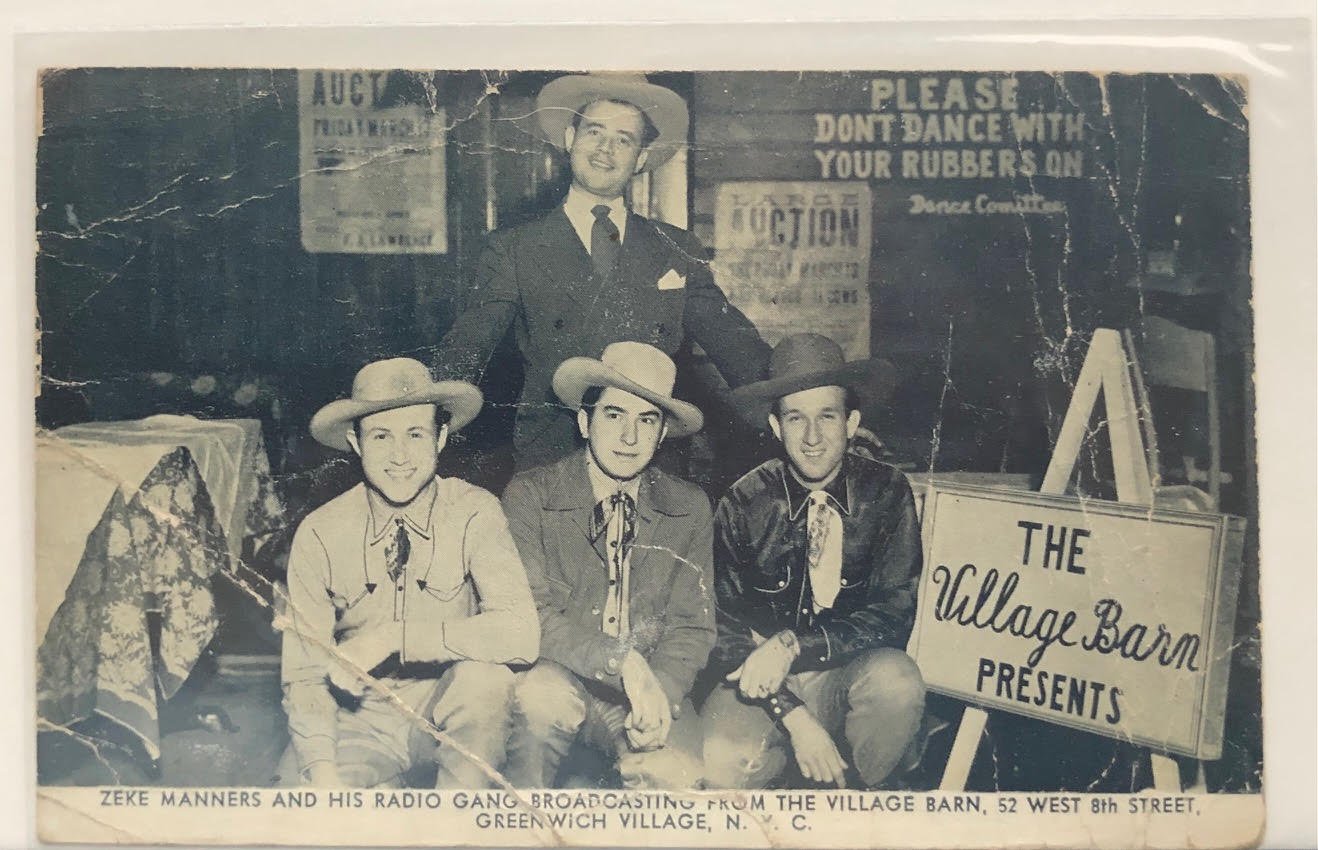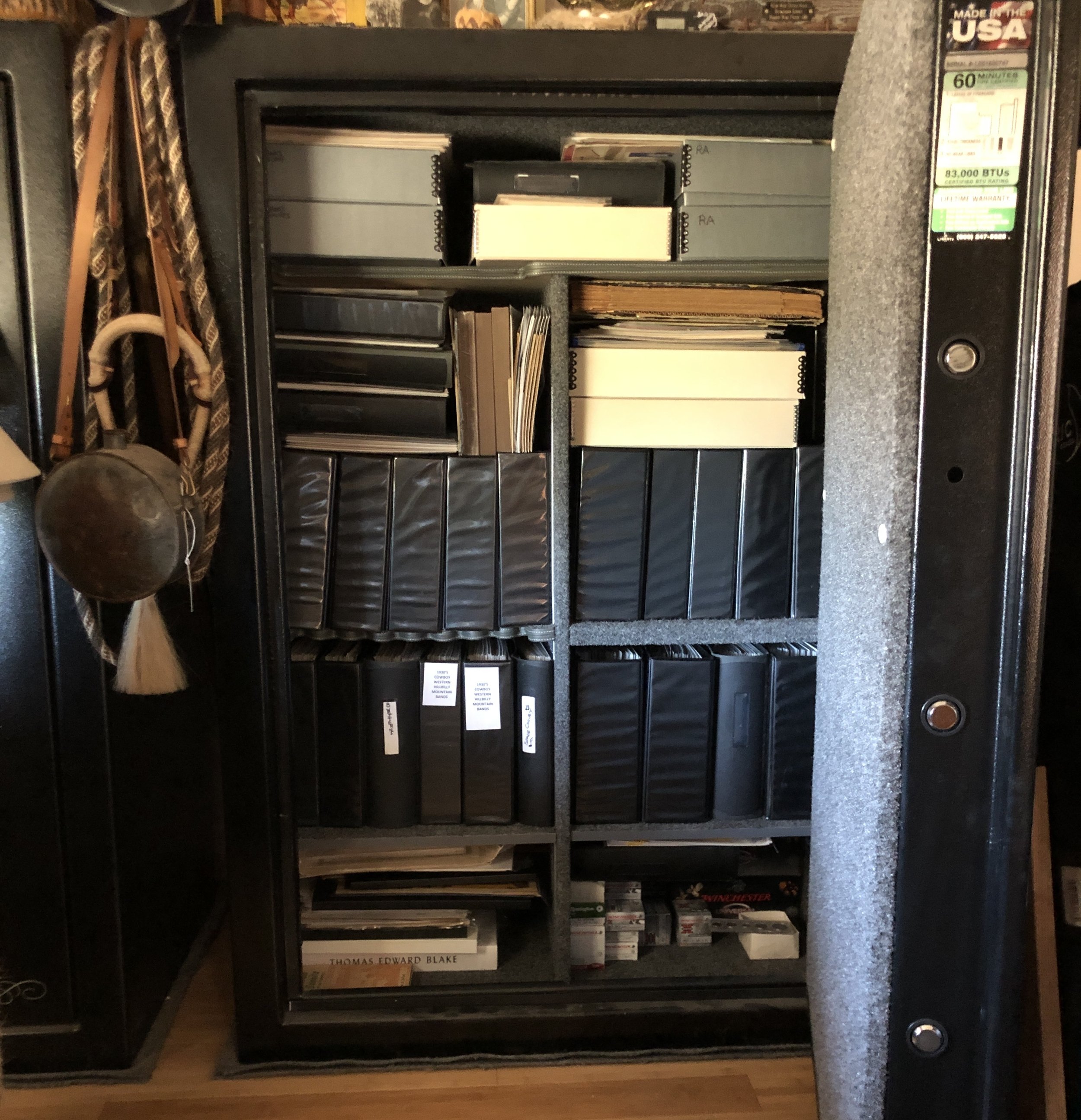FOR SALE TO A GOOD HOME
Offered for sale to the most enthusiastic bidder is Gary Lynch’s collection of photographs, posters and other memorabilia from 1930s - 1950, cowboy, western and hillbilly music.
Lynch is careful to make the distinction between his collection and country music: “This collection cuts off at 1950, not 1950s...before the now common term ‘Country Music’ became a go to phrase. You will not see the word ‘Country Music’ used in 98% of pre-1950 materials. This is cowboy, western and hillbilly music.”
The collection consists of headshots and group shots (some are autographed), original pencil-written lyrics drafts, radio promotions and much more according to Lynch. His collection was started by his father: “Post WWII, my father collected, it was easy....bands handed photos out. Spade Cooley played once a year at our town festival and the ballrooms or clubs had handouts.
I collected from high school on. There was a time it was easy, second hand stores, garage sales, vintage photography conventions, word of mouth....AND in the very beginning eBay was a place to score. Now memorabilia is too costly, especially the most noteworthy items.”
Lynch’s collection is extensive, during a time when one Roy Rogers artifact can sell for five figures at Christies: “All together, easily 200 items plus rare, hard to find songbooks, small-size like self published. Also five crates of 1930-50 full size folios.”
Lynch said: “My most valuable single collection of material is probably my Sons Of the Pioneers material, which includes a number of Bob Nolan authenticated original lyric drafts. Most all were destroyed in his late 1940’s garage fire. I was lucky to get it through a close friend of SOP. A Len Slye autograph is pretty rare, as are the firsts editions, first three folios featuring Len in the cover photos, autographed by all the band members. A Len Slye (Roy Rogers) hand-written lyric draft: few of those around.”
Lynch is a particular fan of the Sons of the Pioneers (SOP) and the bands that influenced them: “You describe Cooley as ‘The King Of Swing’. The original SOPs sang the best harmonies, put the audience into a dreamscape of a romantic west.
The Maddox Brothers and Rose were certainly one of the most colorful Hillbilly Bands of the times, that could cause a semi-comatose worn out laborer to wear out shoe leather on the dance floor. Rose Maddox never received the notoriety she deserved.
The Original Beverly Hill Billies were very influential to the SOP and helped regenerate an interest in Old Timey acts.”
Below are a few glimpses of the total collection - which needs to be catalogued, detailed, explained.
And sold! to a loving home.
ROY ROGERS
Christie’s Auction House has had some success selling Roy Rogers/ Dale Evans memorabilia. This is their description: Leonard Franklin Slye's (Roy Rogers) career as a professional musician came to fruition in 1933 with the launch of the Western Music ensemble Sons of the Pioneers. Founded by Slye, along with Bob Nolan, Tim Spencer, and Hugh Farr, their unique style of cowboy music sung in tight four-part harmony became synonymous with the Country and Western Music scene in Los Angeles prior to World War II. By 1934 their syndicated radio show on KFWB had broadcast their sound across America, which won them movie work as well as a recording contract with Decca Records the same year. The group would record 32 songs for Decca over the next two years with hits like Way Out There, Cool Water and Tumbling Tumbleweeds. They would earn the respect of seasoned Hollywood performers like Gene Autry and Bing Crosby and go on to win work with studios like Warner Brothers, Republic Pictures and Columbia. By 1935 Leonard Slye was finding work as both a musician as well as an actor. In 1938 he won the audition as leading man replacing Gene Autry at Republic Pictures where he changed his stage name to Roy Rogers and permanently shifted the focus of his work from music to acting. Throughout his career Slye would appear in over 100 films establishing him as a matinee idol in Western Films. Along with his wife Dale Evans, The Roy Rogers Show would expose him to the generation of post war children on both radio and television earning him an endearing following that dubbed him The King of the Cowboys. Roy Rogers has been twice voted into Nashville's Country Music Hall of Fame. His first induction was in 1980 for his contribution as a founding member of the Sons of the Pioneers and again in 1988 for his work as a solo performer.
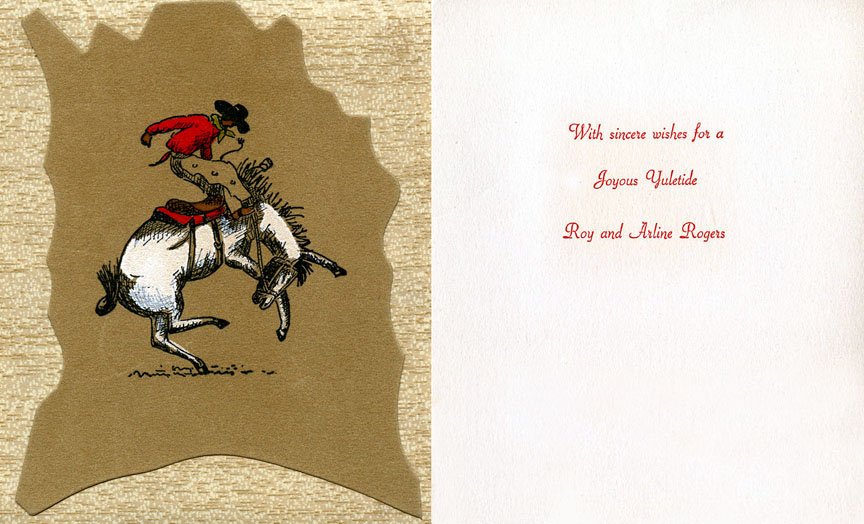
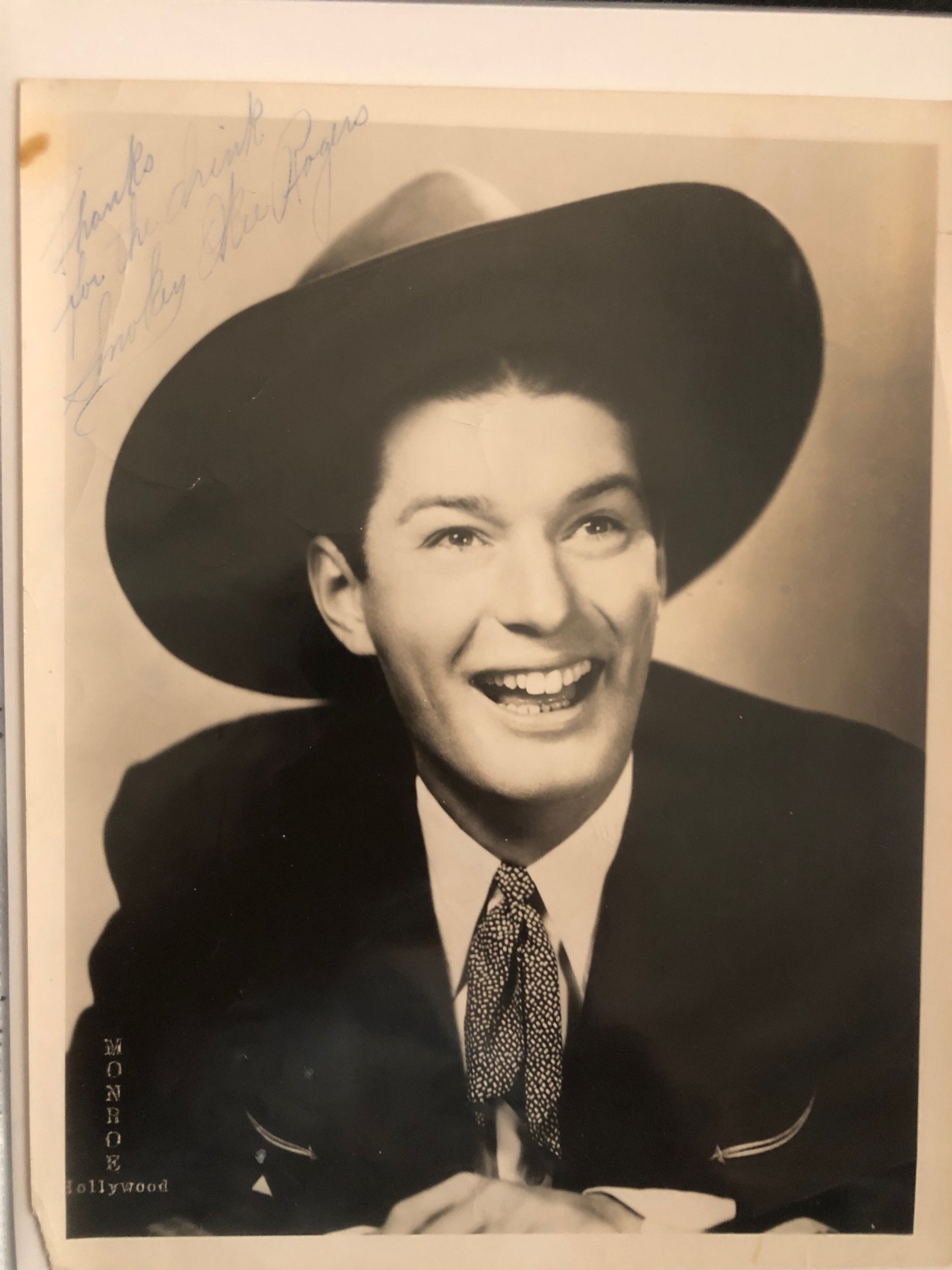
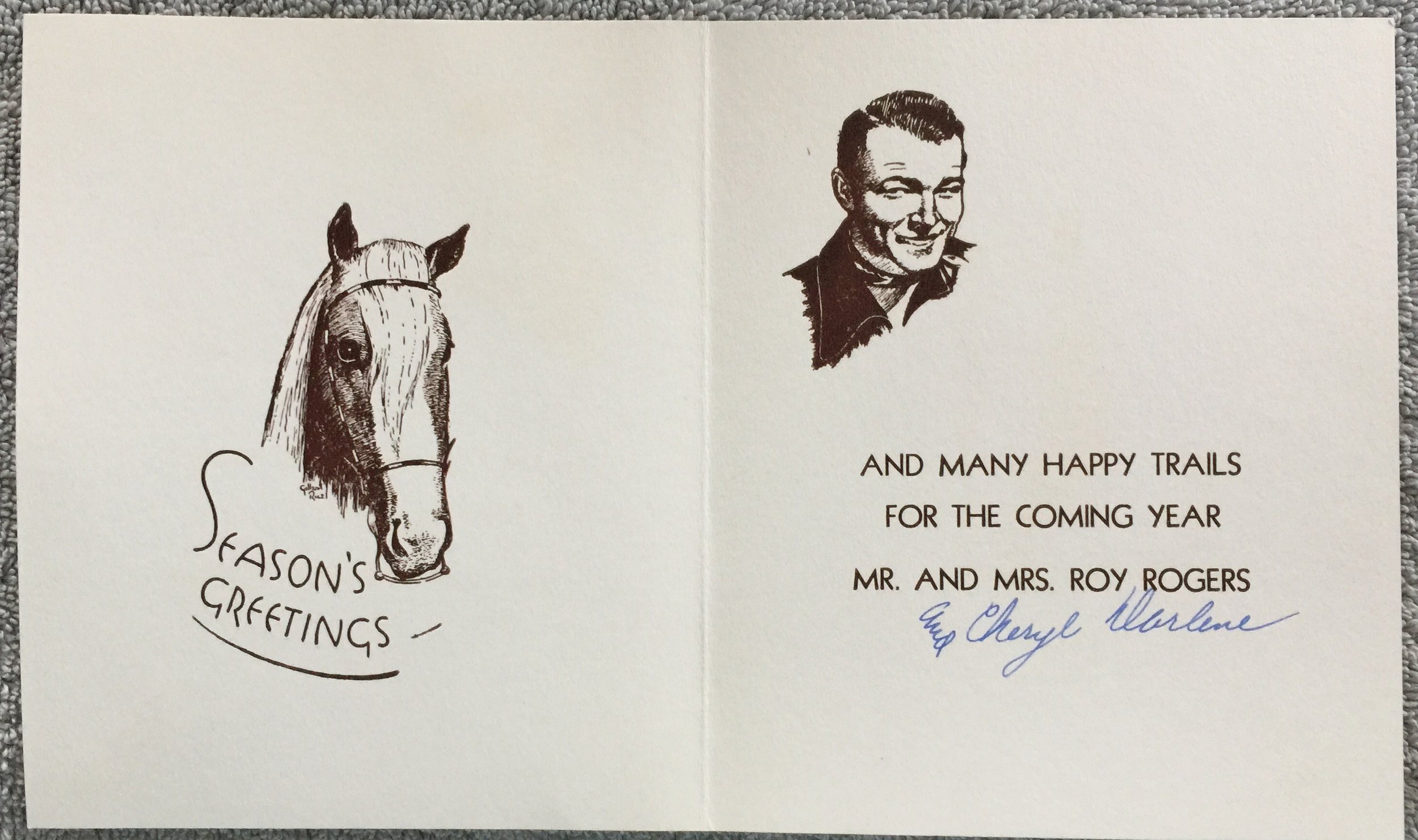
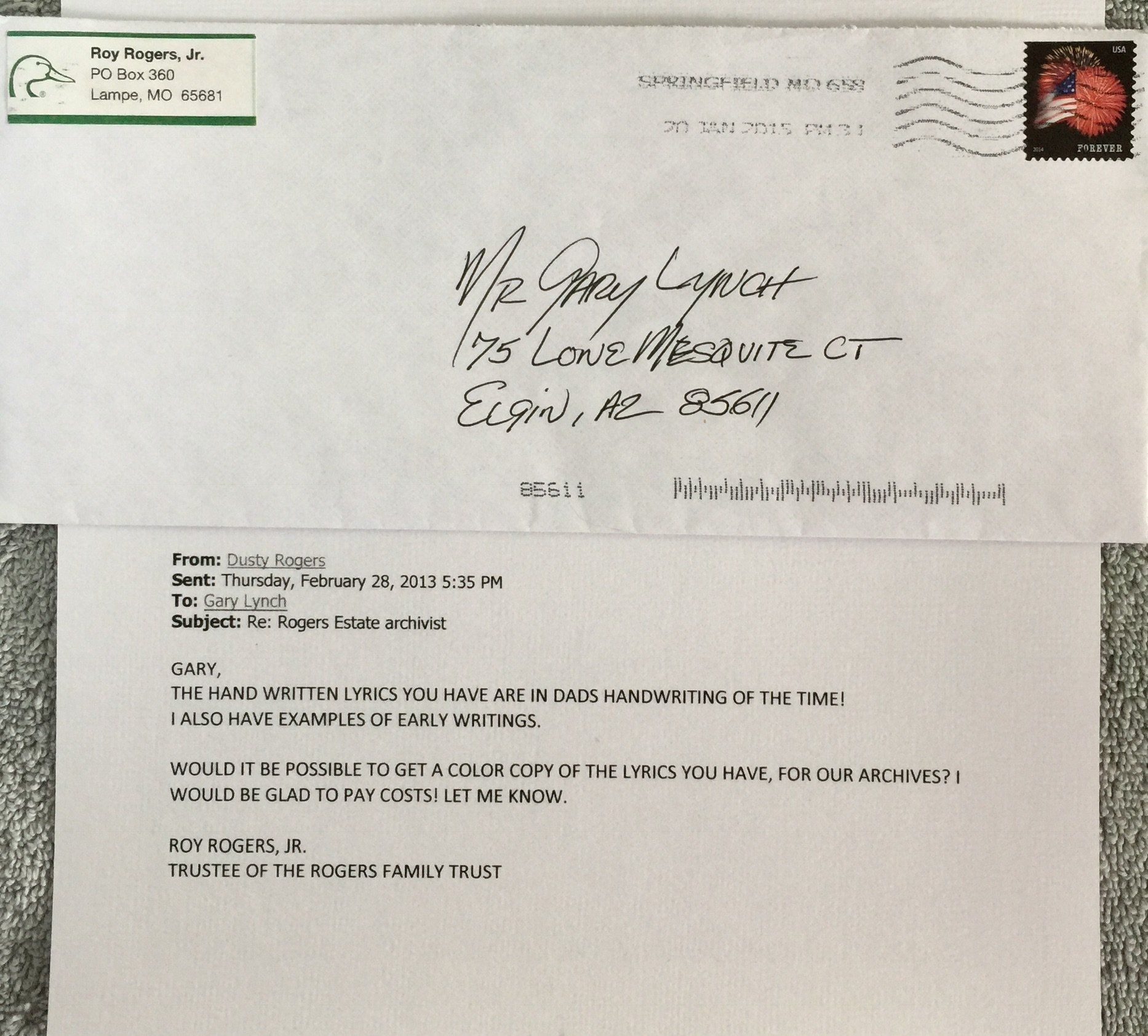
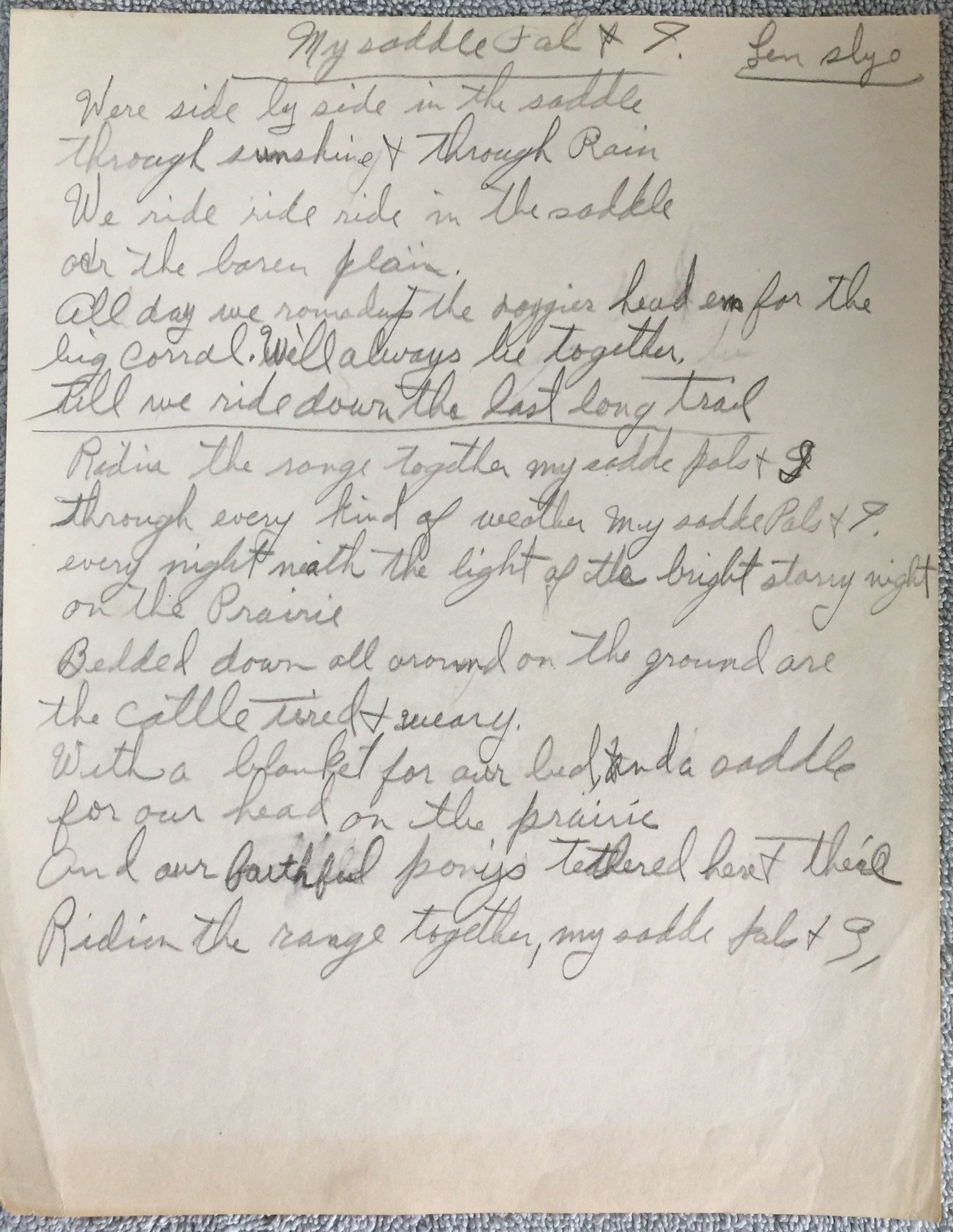

SONS OF THE PIONEERS
According to countrymusichalloffame.org: America’s premier western singing group was formed in 1933 by Ohio-born Leonard Franklin Slye[Roy Rogers], and was initially called the Pioneer Trio.
The group included Canadian-born Bob Nolan, and Tim Spencer of Oklahoma. In late 1933 or early 1934 the trio added Hugh Farr, one of the finest country fiddlers of that era, and in mid-1935 guitarist Karl Farr, Hugh’s brother, joined the quartet, bringing with him a unique skill that would influence musicians for years to come. Slye, Spencer, Nolan, and Hugh and Karl Farr are referred to by some as the “original” Sons of the Pioneers.
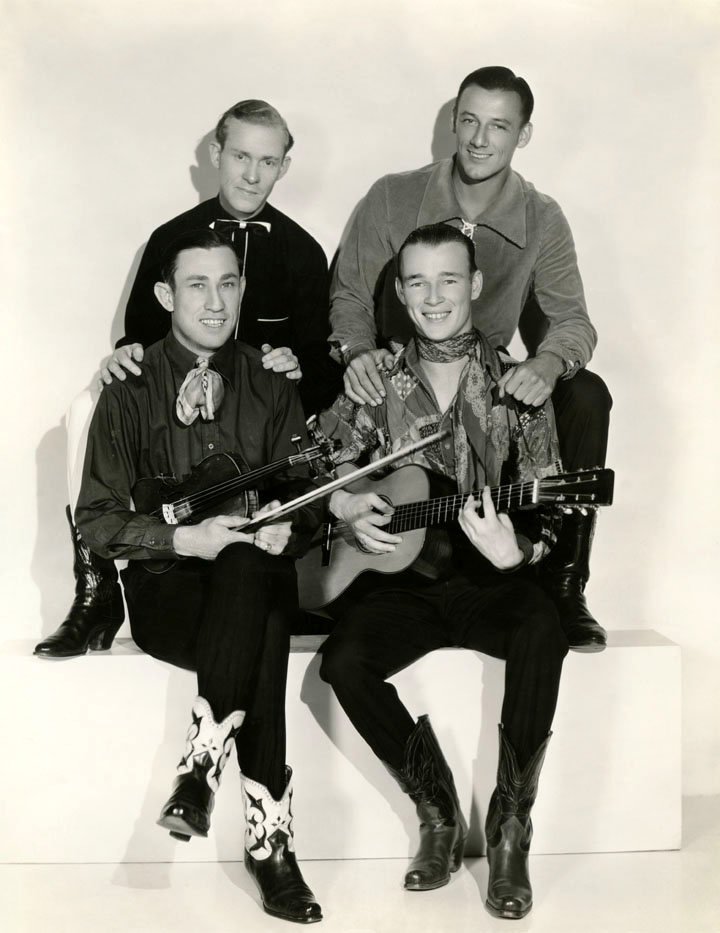
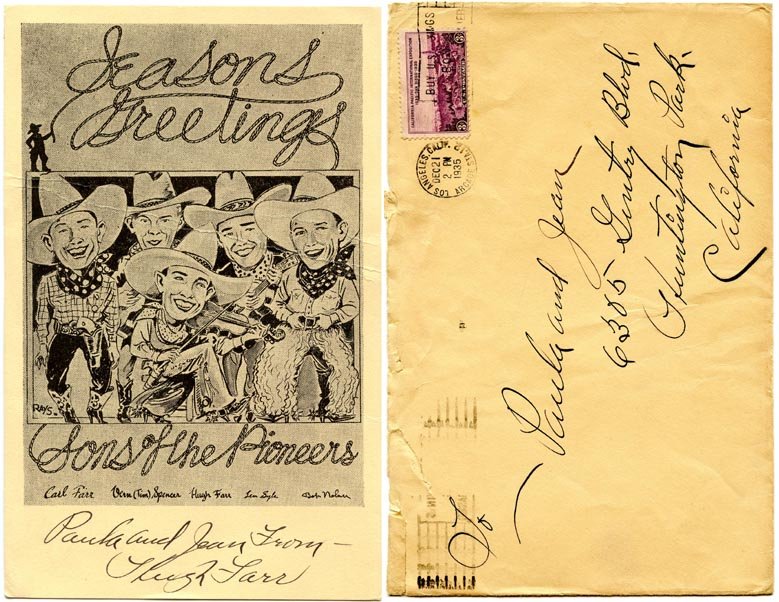


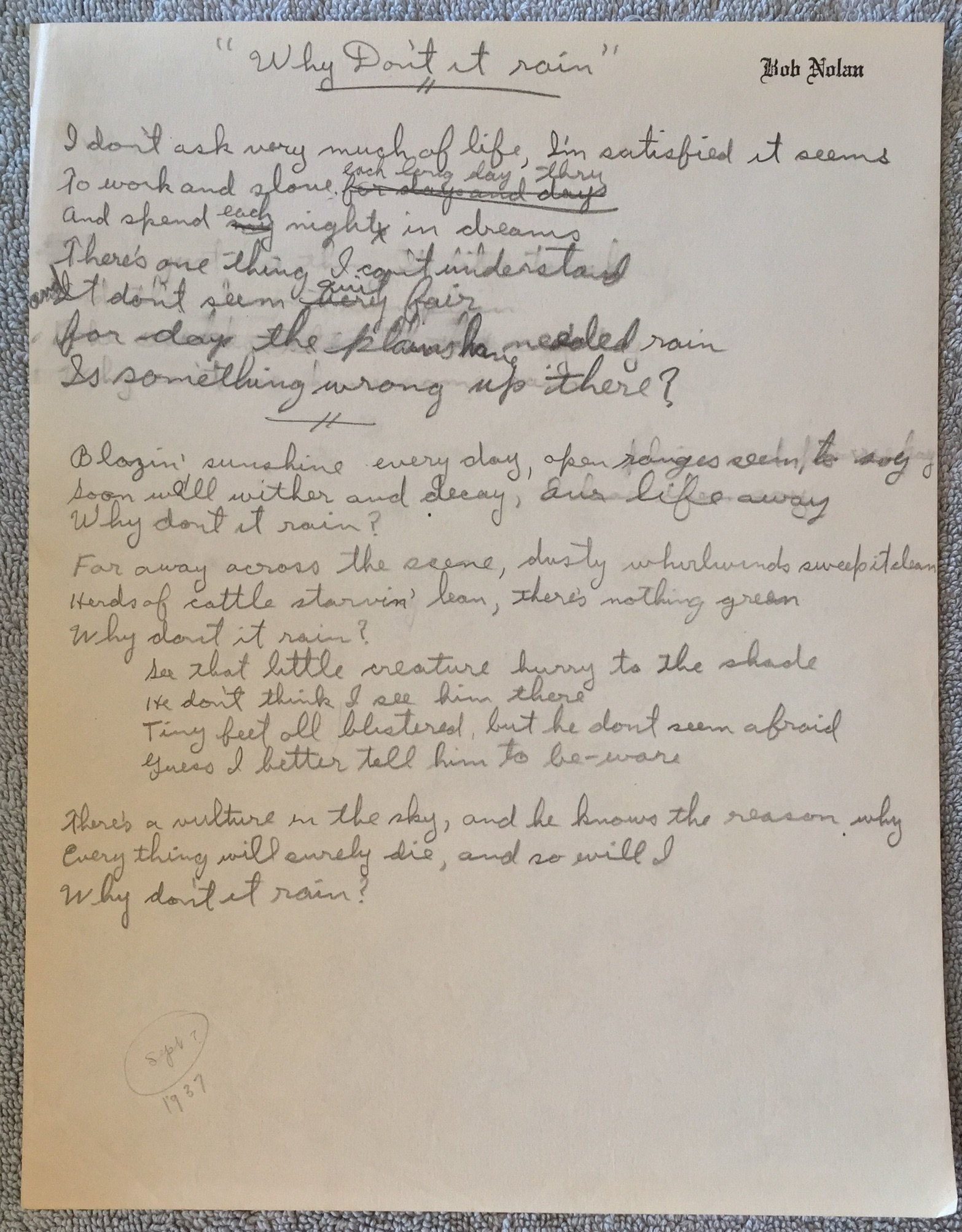
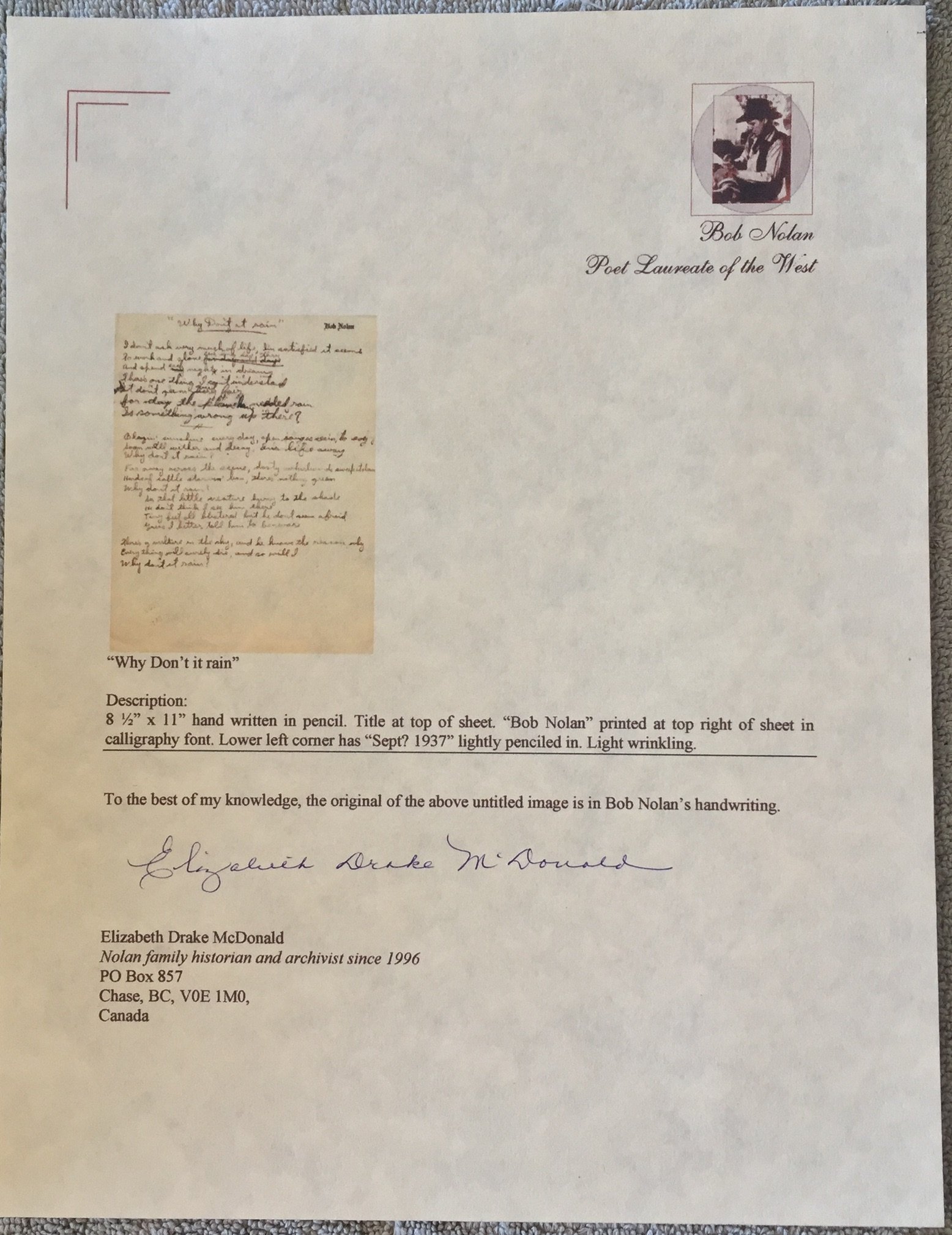
SONS OF THE PIONEERS 1936 FIRST EDITION SONG FOLIOS - SIGNED
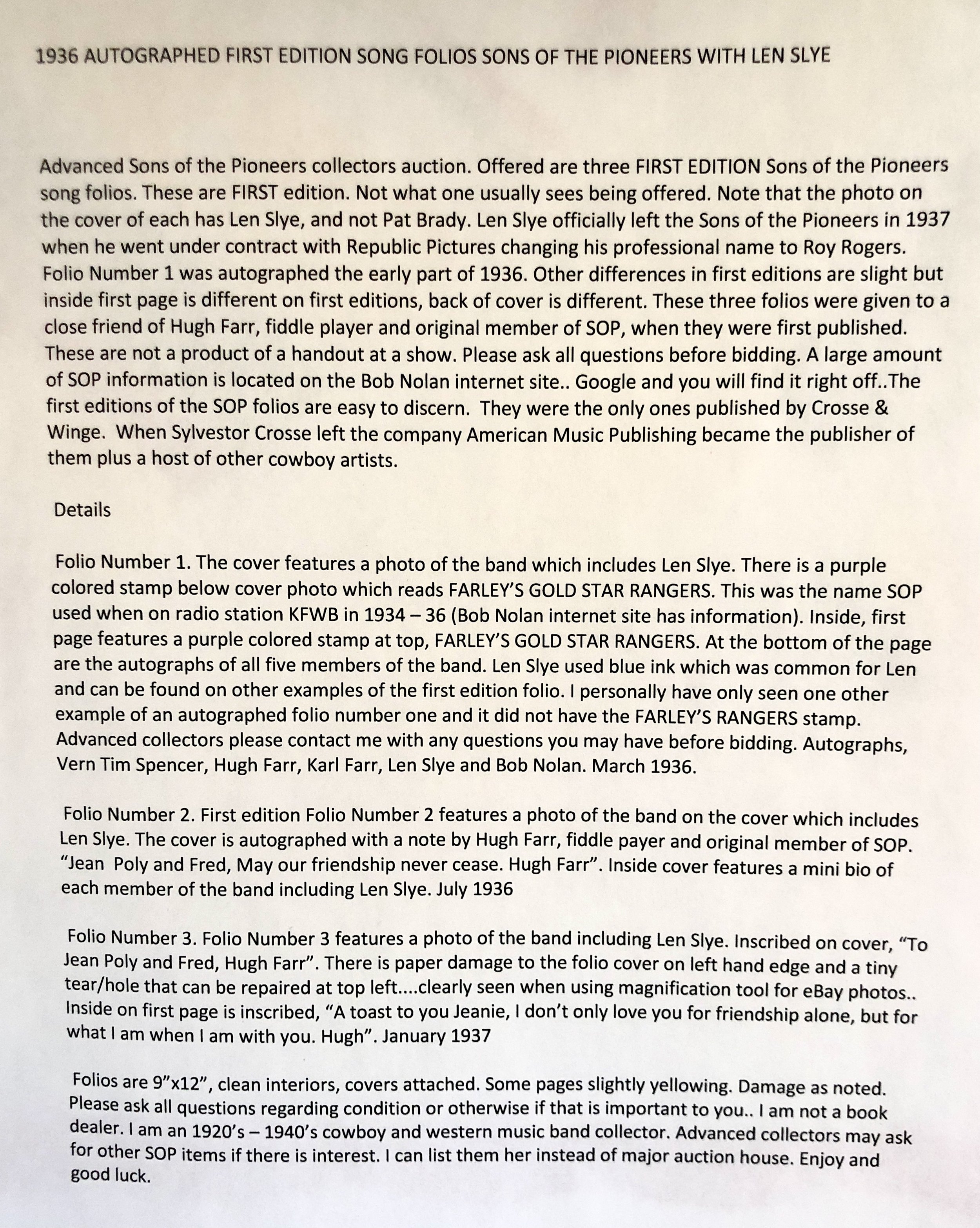
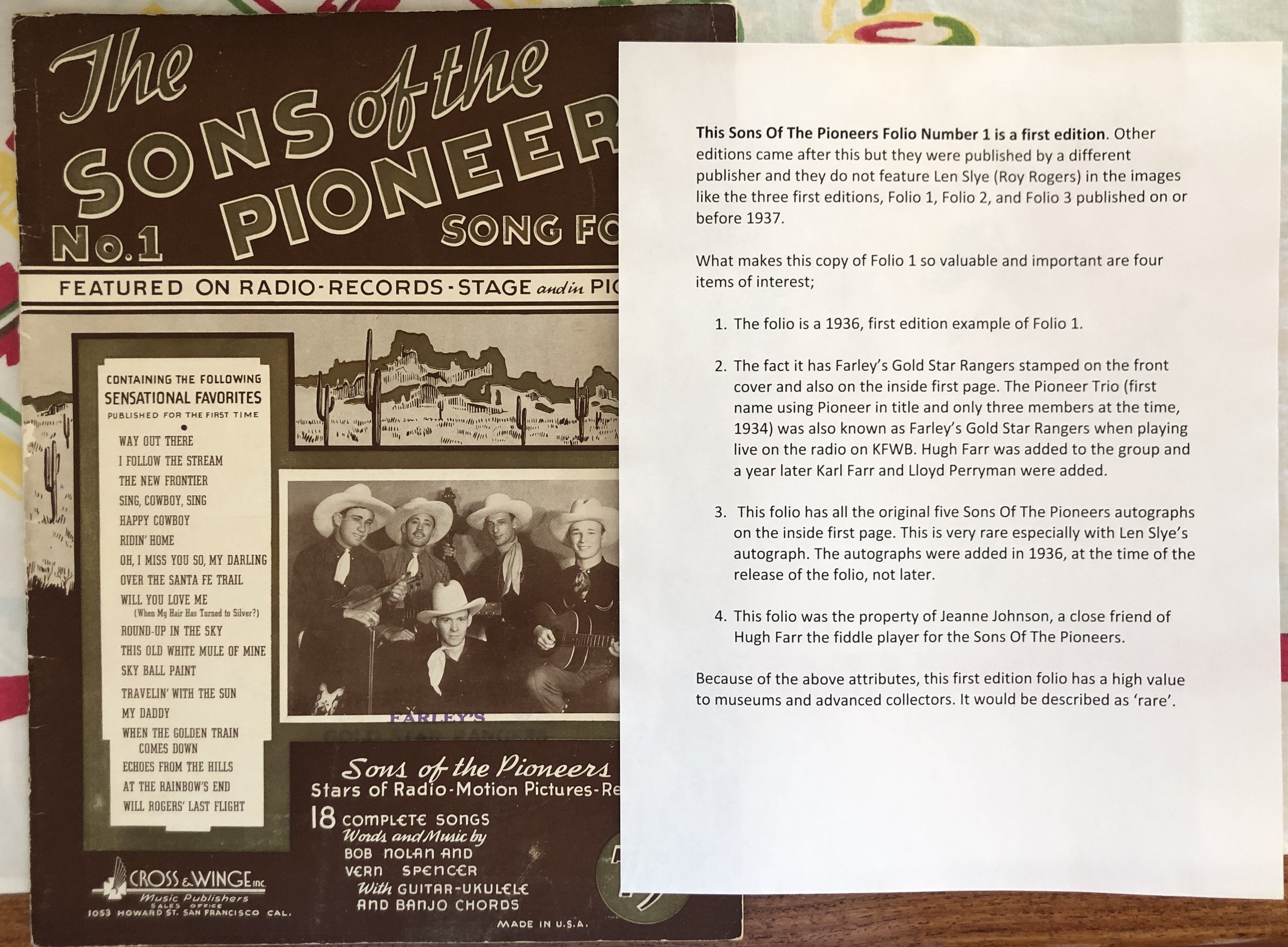

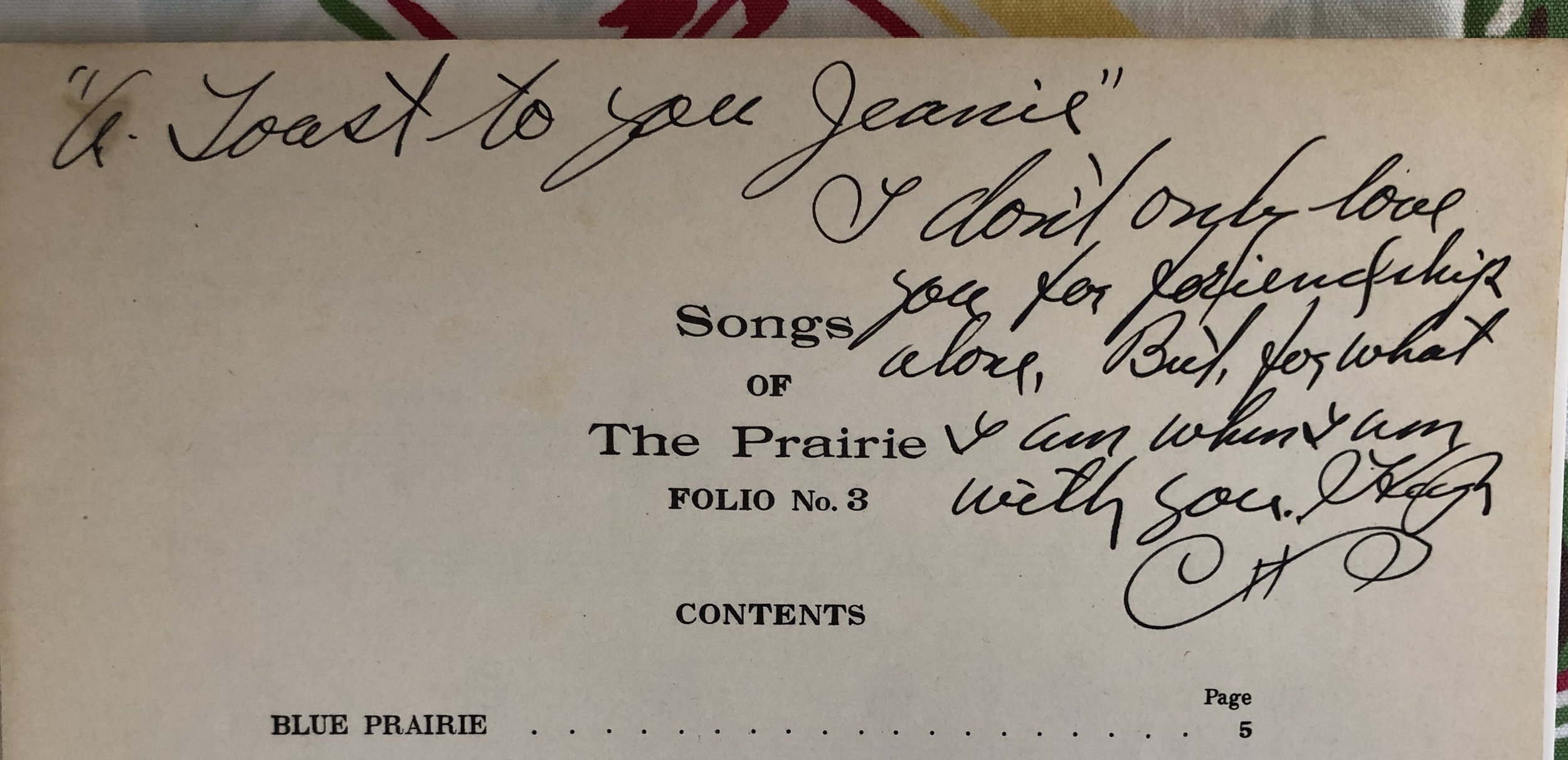
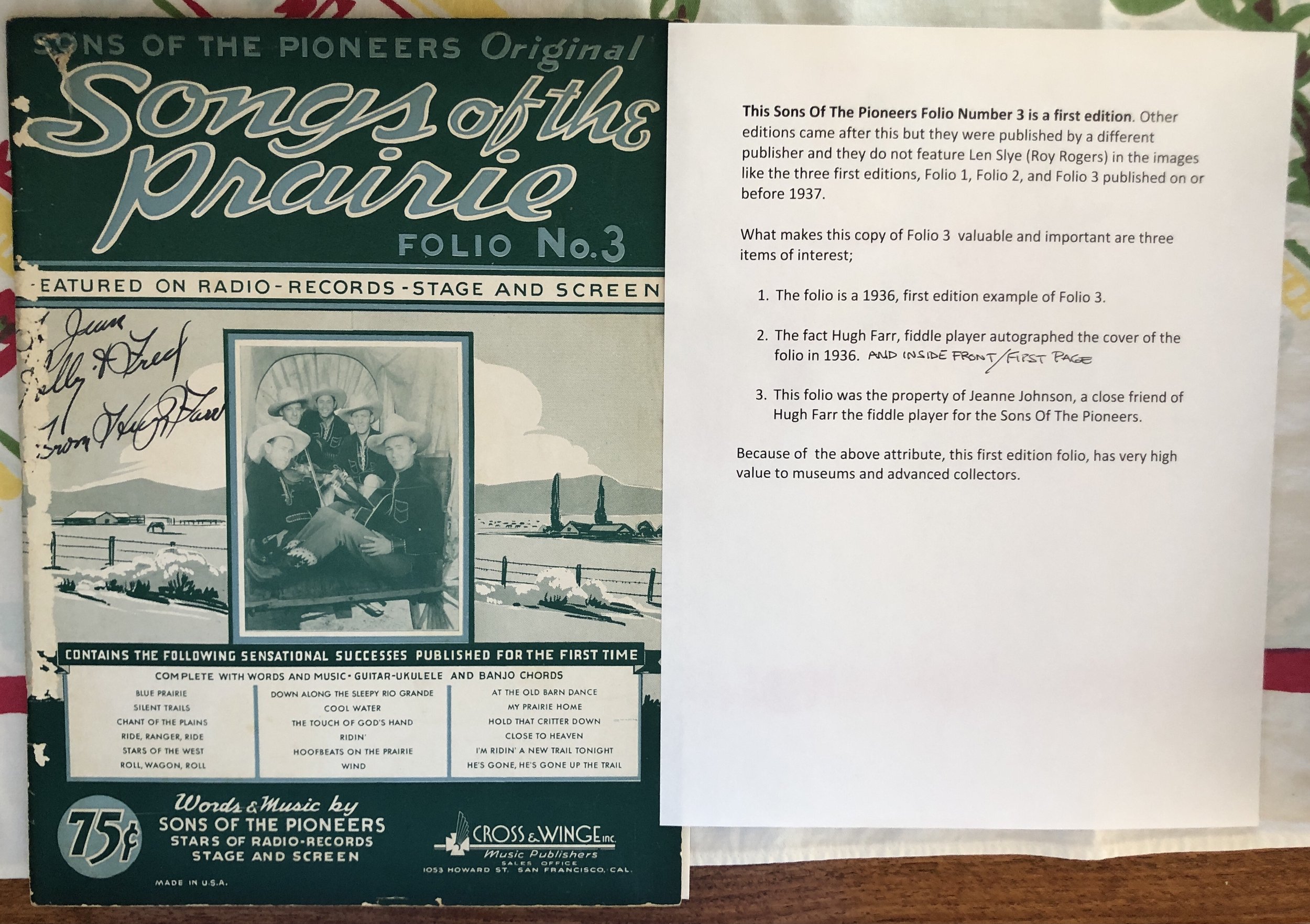

SPADE COOLEY
The IMDB.com bio of Spade Cooley reads, in part: Violinist and cellist, singer, actor, composer and songwriter ("Shame On You"), conductor, arranger and inventor who popularized western swing music on film and recordings, in person and on radio and television.
When Spade was four, he and his parents John and Emma Cooley moved to Oregon where he studied classical violin and cello, and at the age of eight he began performing at community dances and hoedowns with his father.
At age 22, his parents moved to Modesto, California where he earned a modest living playing in bars and outdoor events as well as in nearby Fresno and Stockton for polka parties and square dances. A persistent search for film work landed him a job at Republic Pictures as a stand-in for Roy Rogers with whom he shared a slight resemblance. Soon he was singing with the Riders of the Purple Sage and made his first recording in 1941 with the Cal Shrum.
The Spade Cooley Orchestra was formed soon afterward as a headline attraction at the Venice Pier Ballroom and later at the Riverside Rancho in Los Angeles (where the popular Carolina Cotton joined the band as a bass fiddler, singer and yodeler), and the band opened the doors at the new Santa Monica Ballroom while recording for RCA Victor.
His eleven-year television career started at KTLA on August 5, 1948 where he broadcast live from the Santa Monica Ballroom, capturing seventy-five percent of the viewership. The orchestra dissolved in 1959 and Cooley began planning a never-built amusement park for Kern County to be called Water Wonderland which would feature boat races and swimming and incorporate a broadcast studio for a new television series. But health and financial problems ensued while at the same time his popularity was quickly fading.
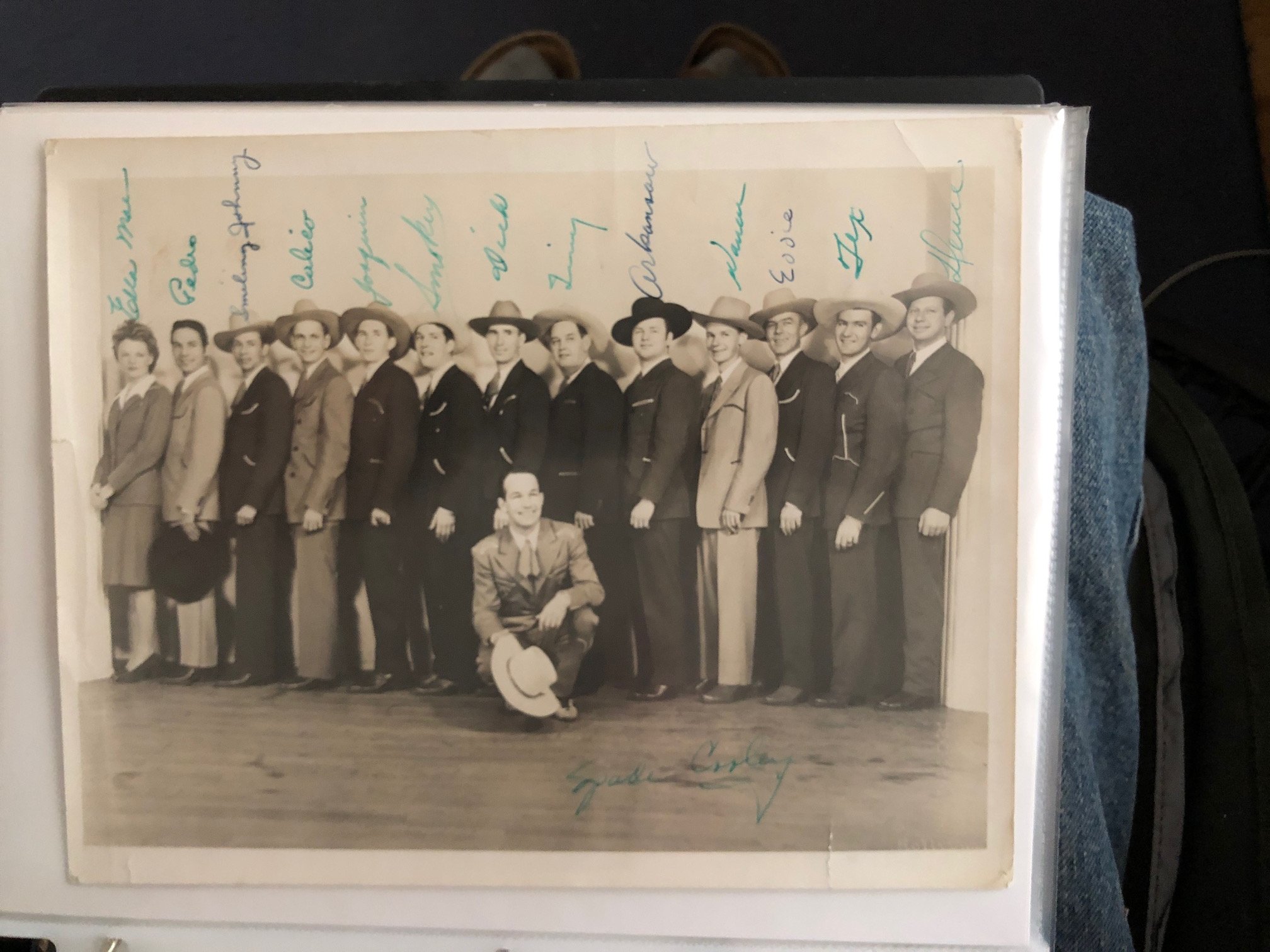

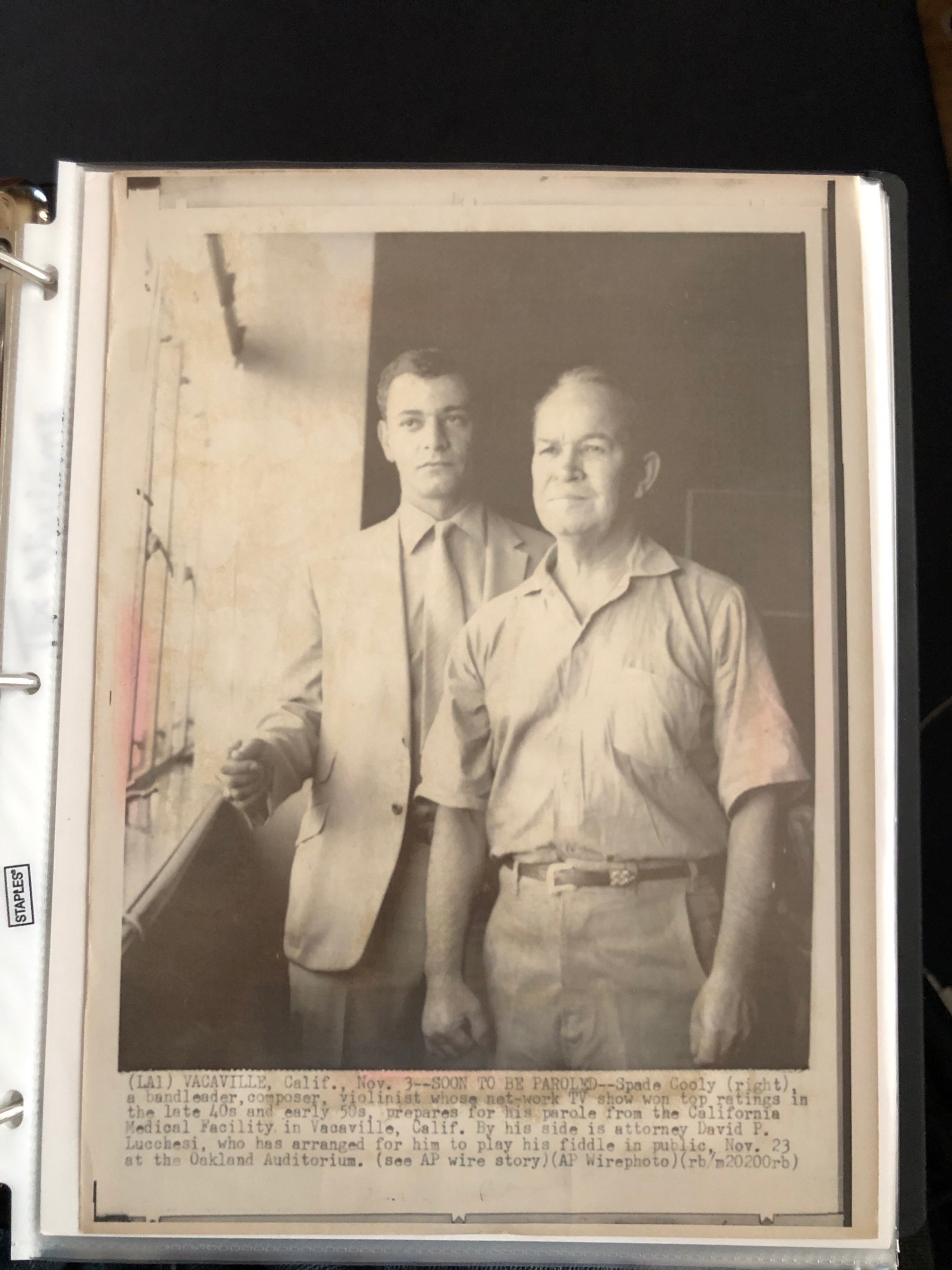
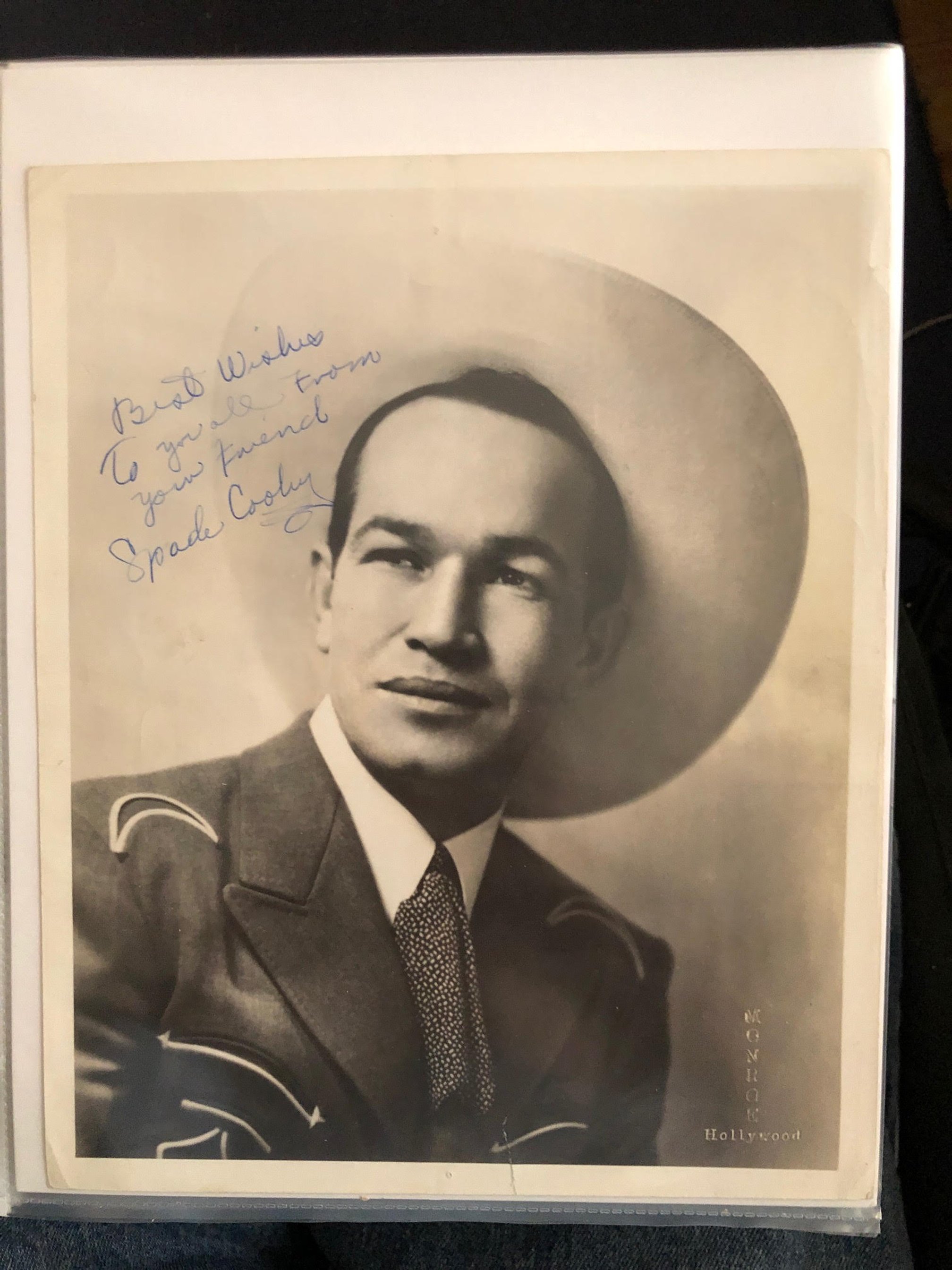

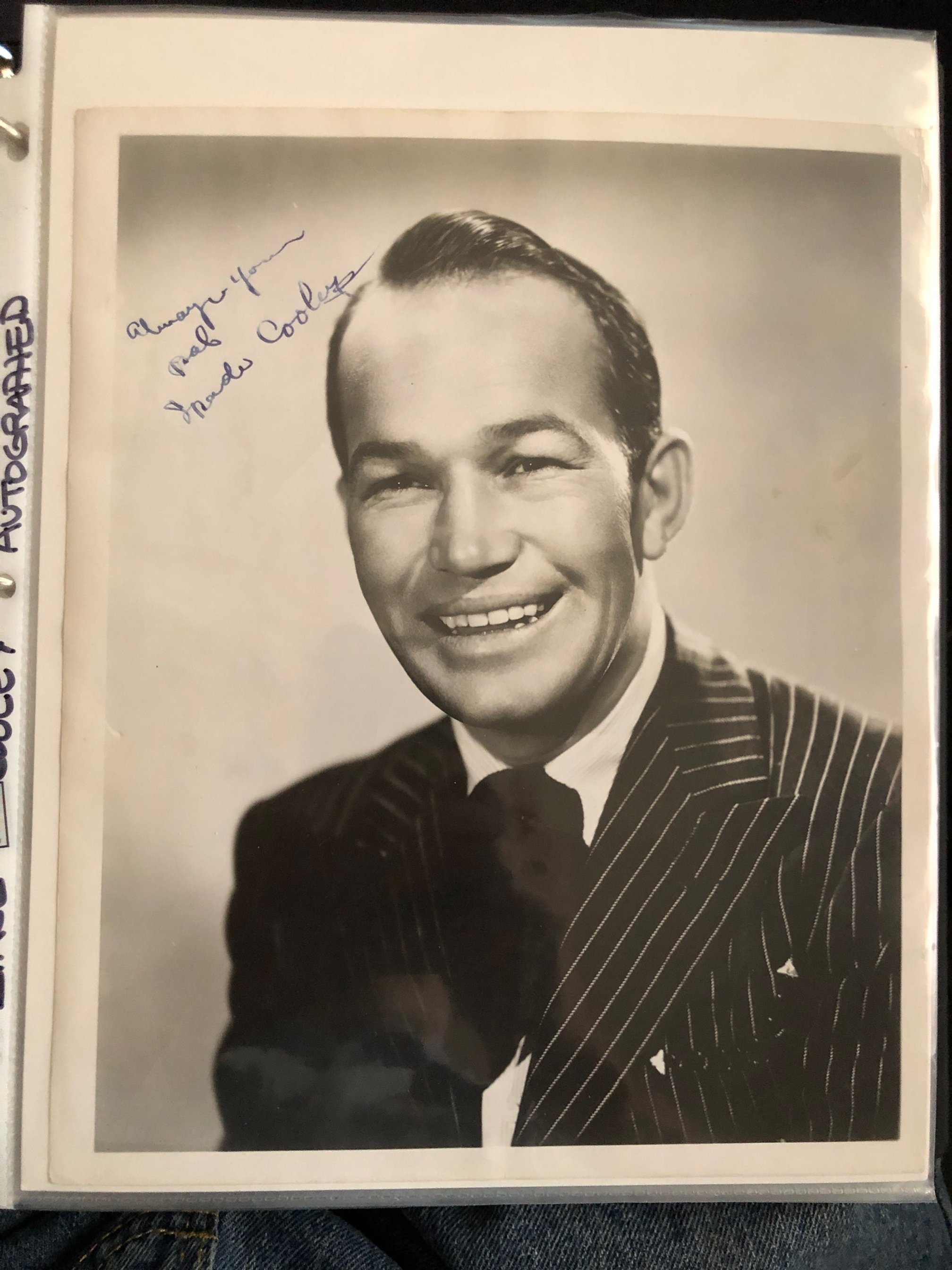
BOB NOLAN
According to Wikipedia: Bob Nolan (born Clarence Robert Nobles; April 13, 1908 – June 16, 1980, name changed to Robert Clarence Nobles in 1929) was a Canadian-born American singer, songwriter, and actor. He was a founding member of the Sons of the Pioneers, and composer of numerous Country music and Western music songs, including the standards "Cool Water" and "Tumbling Tumbleweeds." He is generally regarded as one of the finest Western songwriters of all time. As an actor and singer he appeared in scores of Western films.


TEX WILLIAMS
The Wikipedia version: Sollie Paul "Tex" Williams (August 23, 1917 – October 11, 1985) was an American Western swing musician. He is best known for his talking blues style; his biggest hit was the novelty song, "Smoke! Smoke! Smoke! (That Cigarette)", which held the number one position on the Billboard chart for sixteen weeks in 1947. "Smoke" was the No. 5 song on Billboard's Top 100 list for 1947, and was No. 1 on the country chart that year. It can be heard during the opening credits of the 2006 movie, Thank You for Smoking.
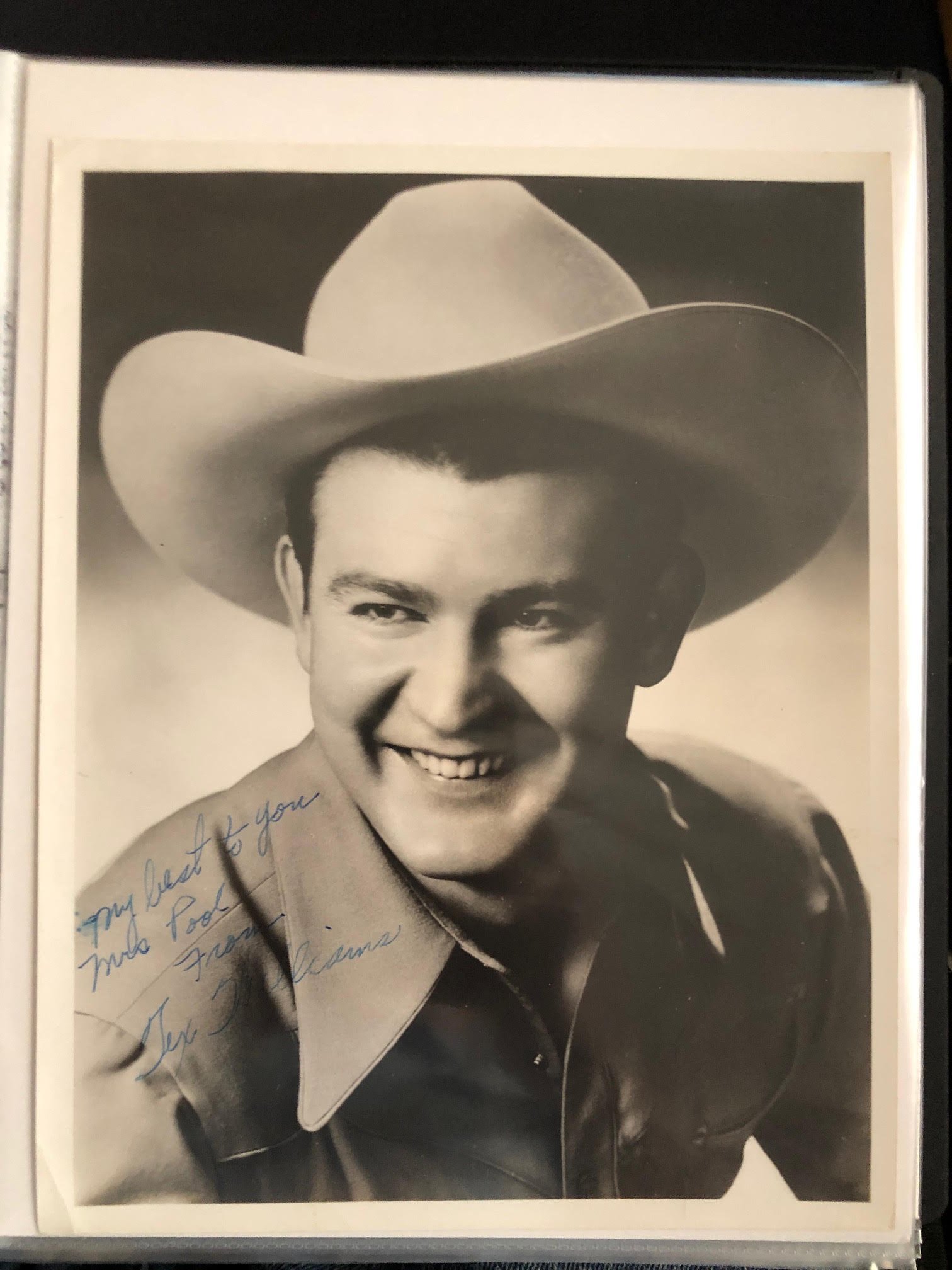
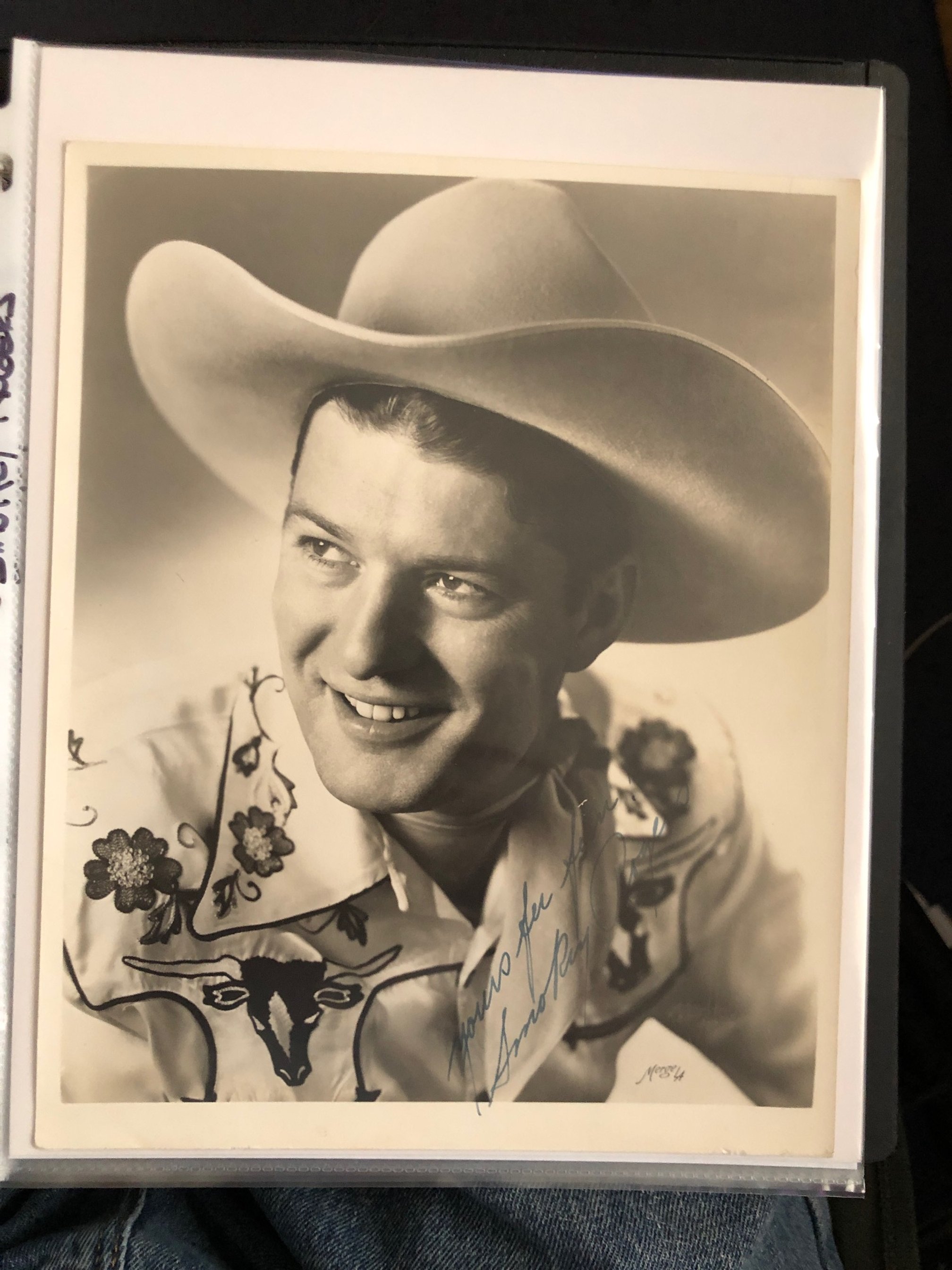
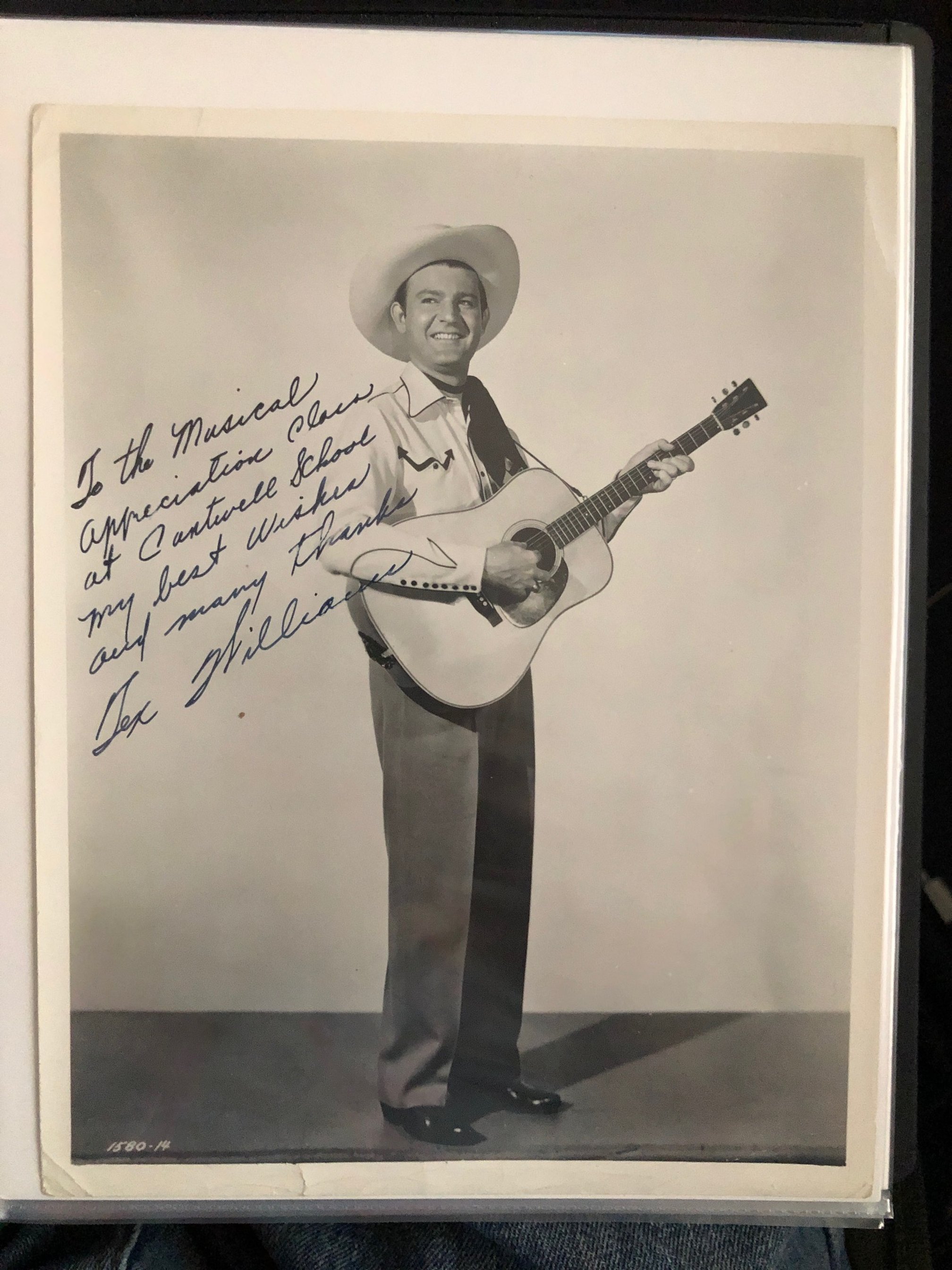
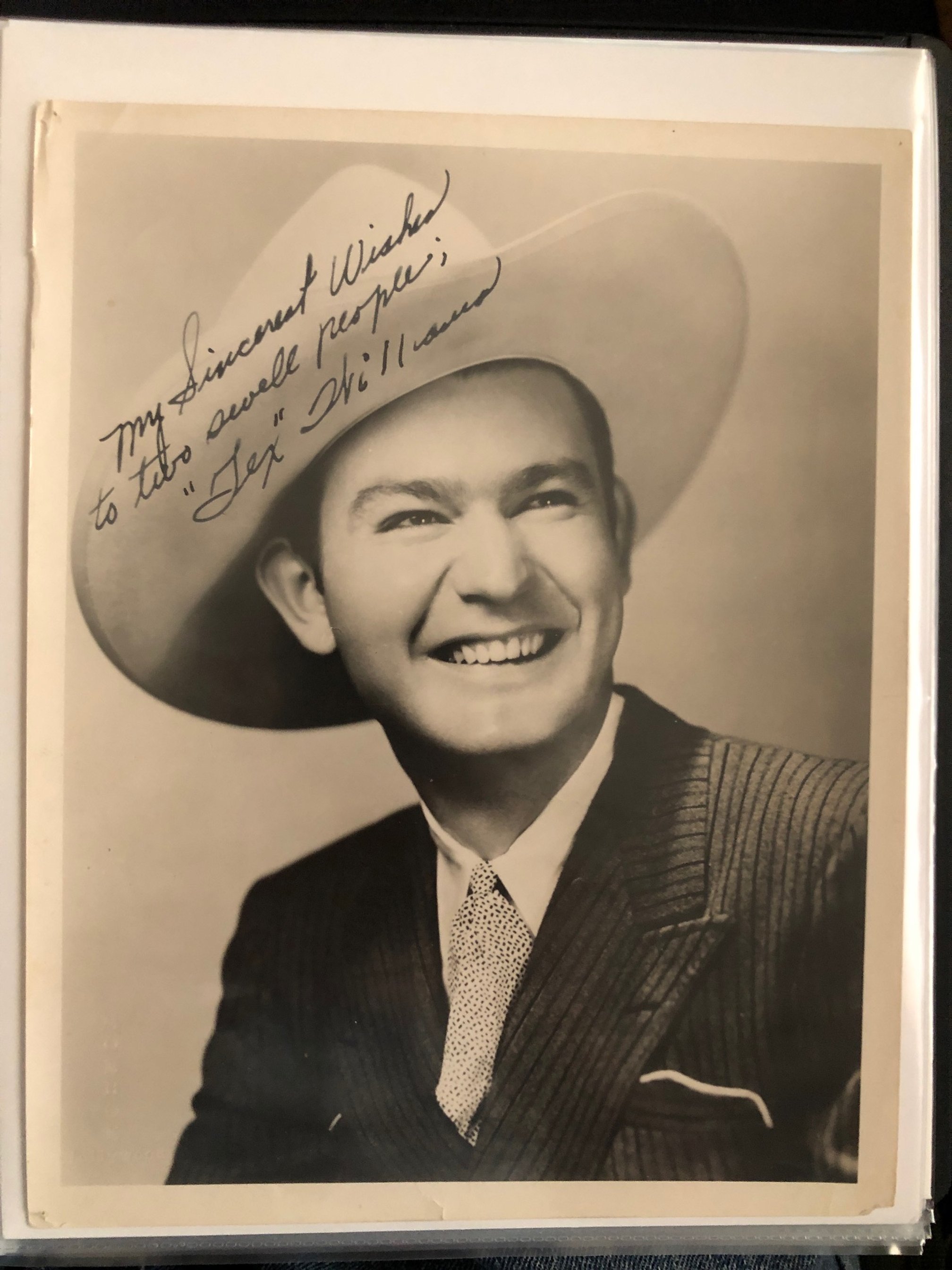
UNCLE JACK AND MARY LOU
According to Gary Lynch: Jack Nelson, who early country music fans came to affectionately know as Uncle Jack as part of the husband wife duo known as Uncle Jack and Mary Lou, was born in a small mining town of Buchtel, Ohio in the late 1890s. Mary Lou was said to have been born in the town of Patriot, Ohio.
In a rare instance, a Peer International song folio contained some biographical information about this duo. A folio published in 1941 mentions that radio audiences first got to hear Uncle Jack over radio station WAIU in Columbus, Ohio around 1928.
As was the case for many a hillbilly or country music artist back then, they developed a bit of a nomadic life going from station to station as you can see in the listing. By 1941, they were entertaining audiences over radio station WEEU in Reading, Pennsylvania.
In 1945, Richard Keeler reported that Johnny Moose, formerly with Dusty Dawson's group, had signed on with Uncle Jack's group as an accordion player.
In the fall of 1946, an article about the legendary armless musician, Ray R. Myers, notes that he had become a part of the Uncle Jack and Mary Lou group of entertainers while they were on WEEU in Reading, Pennsylvania. The article notes he stayed with the group through the winter and into the New Year. But he left for the new World's Fair in New York to see what work he could find. But things didn't work out for Ray in New York but he did get an offer to join WHAS in Louisville, Kentucky.
Nicola and Rose Fantetti reported in the summer of 1947 that Bud Bensen had joined the Uncle Jack and Mary Lou troupe again and was telling them he was "...sounding better than ever if that's possible." In another column, Matt Pelkonen noted that Uncle Jack Nelson had teamed up with Ben Shelhammer, Jr. and Dick Reynolds on a tune called "Can't You See You're Not The One For Me". It reportedly was being sung by such artists as Slim Stuart, Kenny Roberts and Cowboy Dallas Turner. We could surmise that the pairing of songwriting talents came about during a visit by Slim from his regular station, WBAL in Baltimore, on Uncle Jack's show as did the group the Hickory Nuts. We also read that Curley Gibson and his Sunshine Playboys were featuring that tune over WKAP as well as Mariam Horn at WGPA in Bethlehem, Pennsylvania and Dick Layton who was a member of Dopey Duncan and his Tophands at WKAP. Mr. Pelknonen's column was noteworthy for mentioning the various new songs being published and who was singing them. He noted again that the song was being aired by the Blue Sky Boys when they were at WNAO in Raleigh-Durham, North Carolina in 1948.
Billy Wilson wrote in his Kilocycle Clipings column in 1947 that WEEU was home to a couple of other well-known acts at the time. After Uncle Jack and Mary Lou's show aired, they were followed by Ash Taylor and the Homesteaders and then Shorty Long and the Santa Fe Rangers, including Dolly Dimples.
In the summer of 1948, Matt again writes that the trio wrote another tune that was gaining airtime - "I'll Spread My Blanket Neath The Stars". This time, it was the Ertman Sisters who were at WBUX in Doylestown, Pennsylvania and a fellow known as Fred the Fiddler over WTTM in Trenton, New Jersey on his daily show from 7:30 to 7:45am.
In many of the articles that mention what stations they appeared on, we don't get a sense of what time their show aired. Charles Simpson wrote in his Dialing At Randum column that Uncle Jack's group were on WEEU from 5:30pm to 6:00pm, Tuesdays through Thursdays in the summer of 1948.
Matt also wrote in the winter issue of 1948 that Uncle Jack and Mary Lou made their way down to Florida for the winter to work at radio stations there. He noted that Uncle Jack had been on at least 28 radio stations around the country including a ten year stint at WEEU.
One of those articles did mention that the duo were the proud parents of a son. But our collection does not provide much other details about the two who ran the famed Himmelreich's Grove park where many country music entertainers passed through.
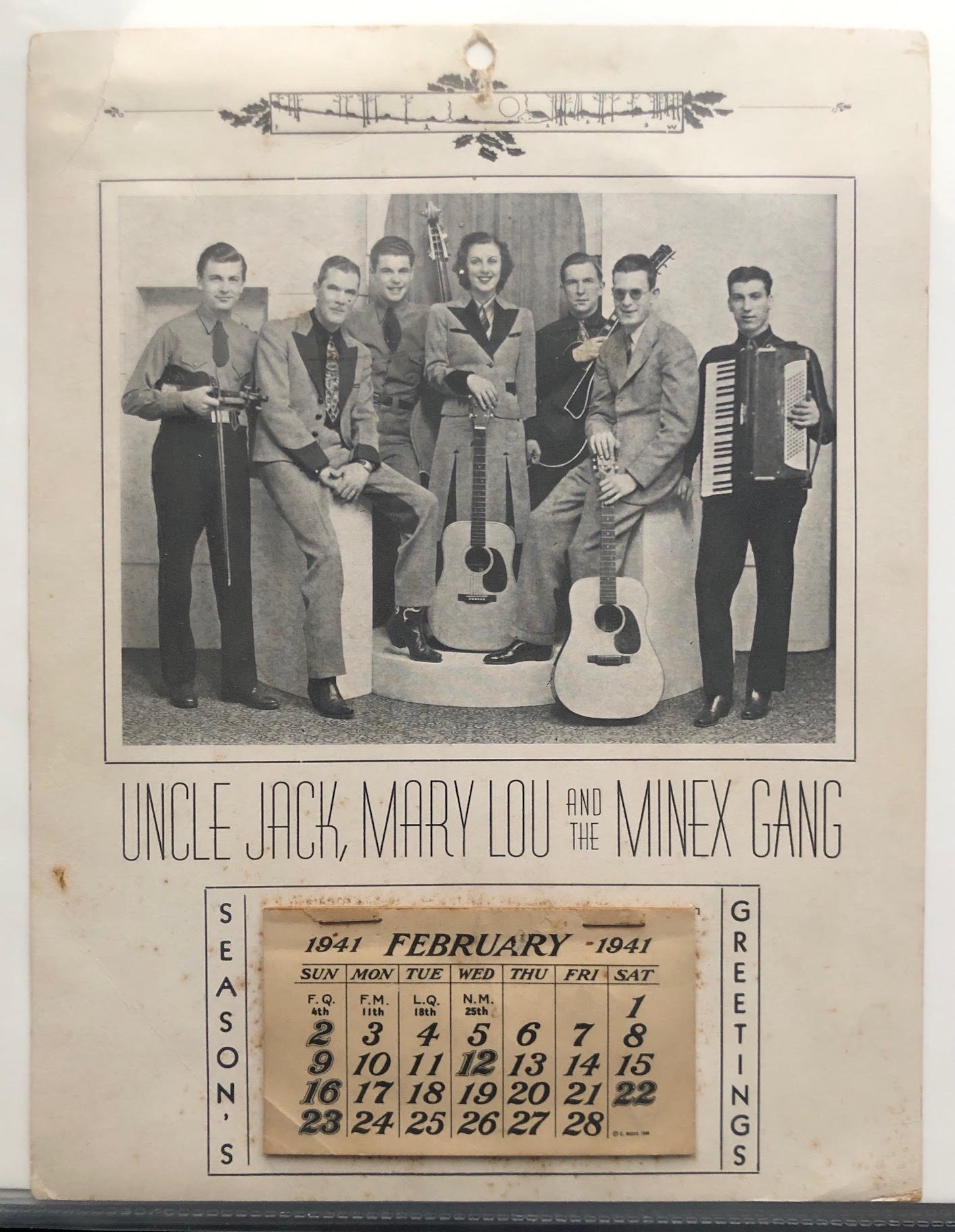
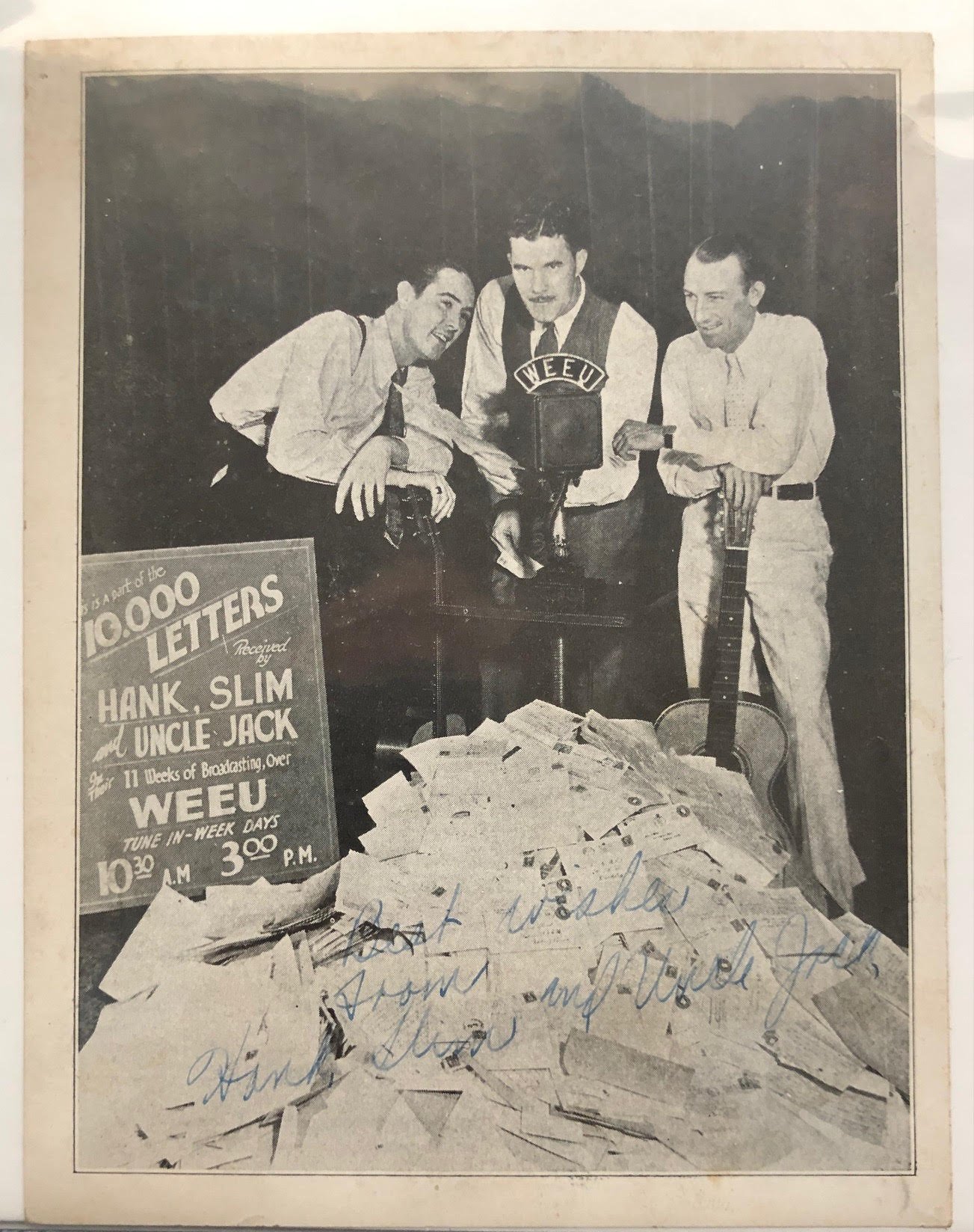
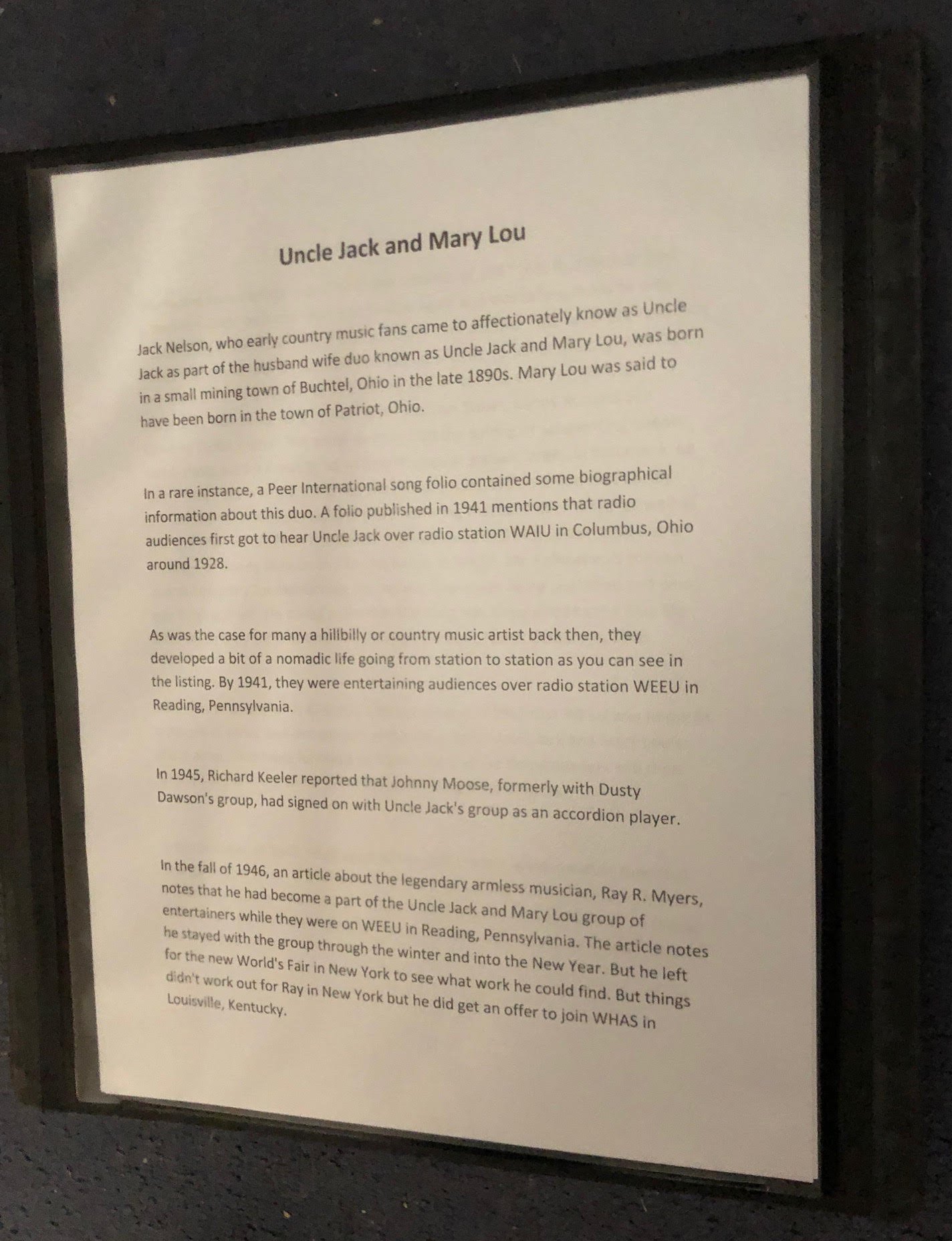


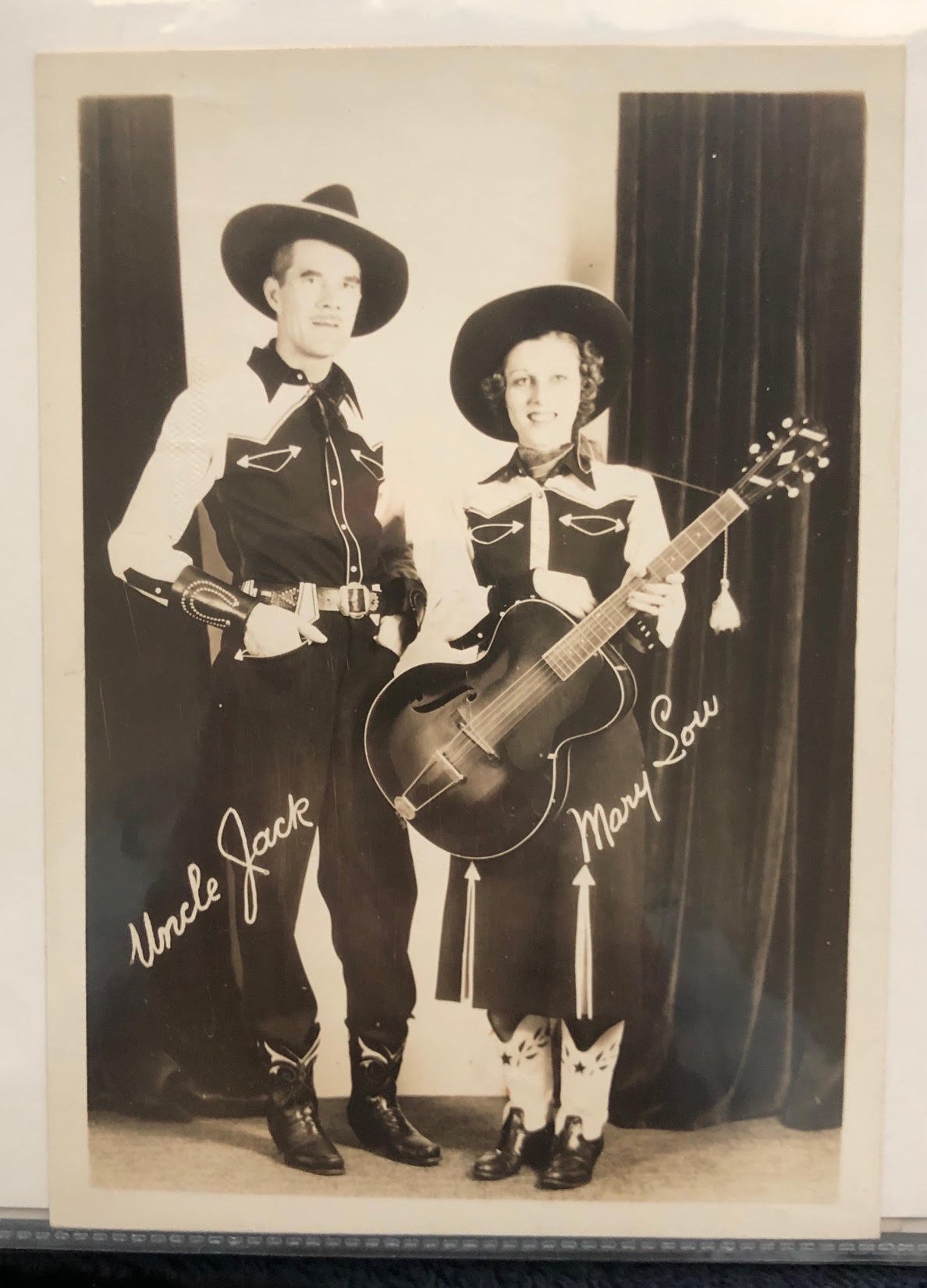
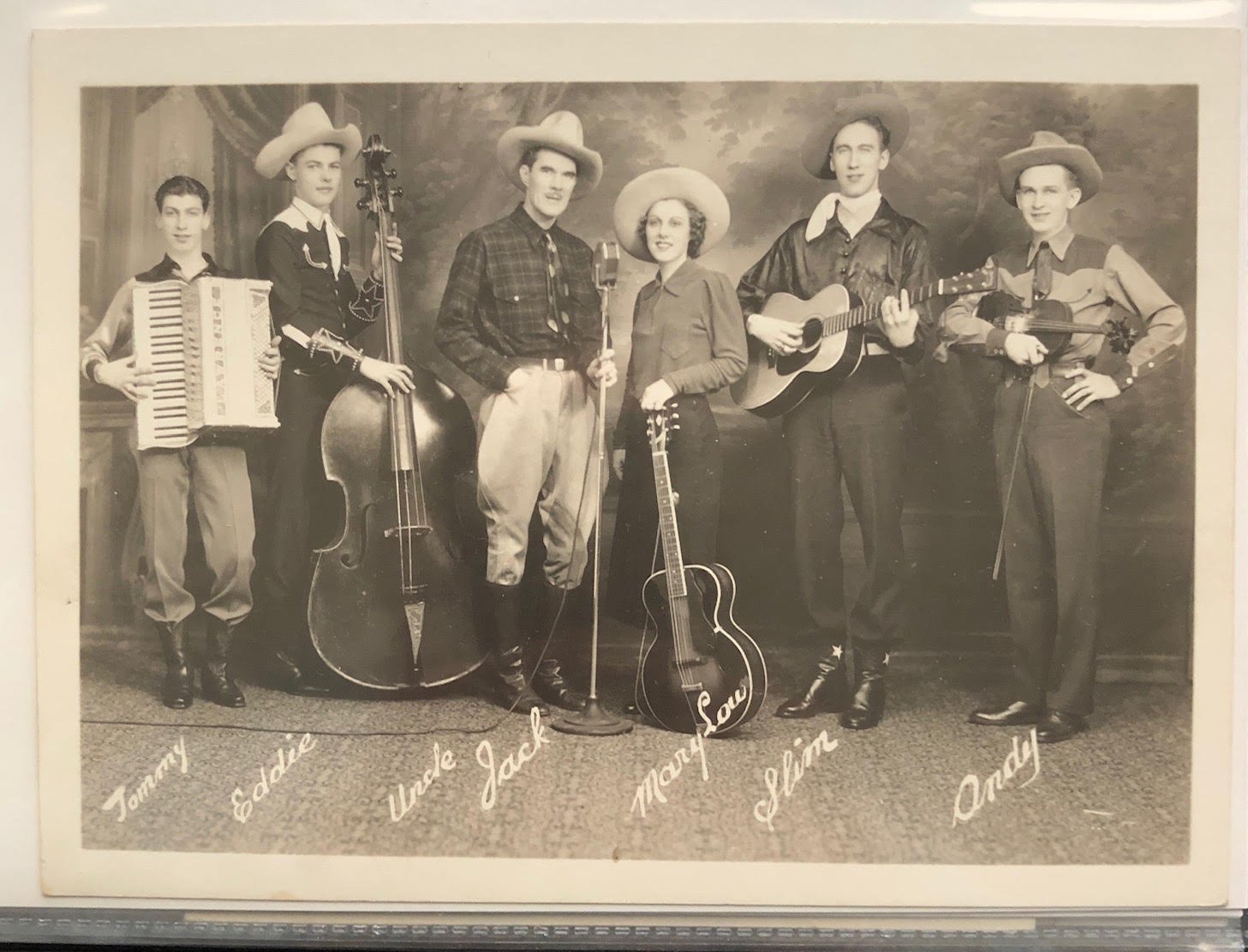


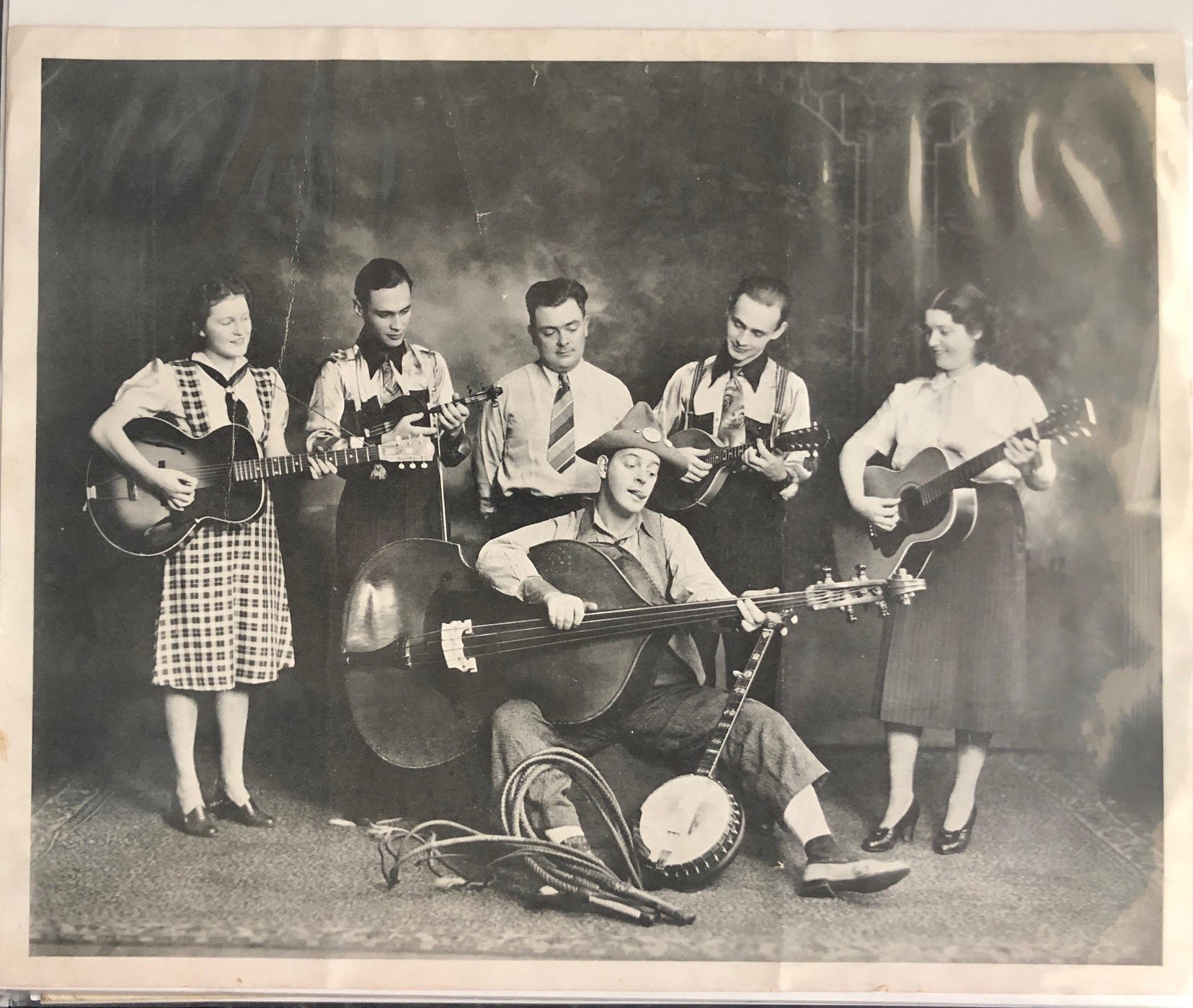
THE BEVERLY HILLBILLIES (1930s)
According to Gary Lynch: The images in this Beverly Hillbillies slideshow were shot through sleeves with an iPhone. Combined 5”x7” and 8”x 10”. Double weight silver prints. Many sepia. Hand outs and promotional photos.
The Beverly Hillbilles were created by three (Los Angeles radio station)KMPC executives: station owner Raymond MacMillan (R.S.MacMillan Petroleum Company), station manager Glen Rice, and staff announcer (John McIntire). In an effort to boost the station's ratings, their scenario was based on a fictional group of characters, a group of Ozark refugees who lived in a remote hollow in the mountains near Beverly Hills. Completely out of touch with civilization, these transplanted mountaineers continued to live in the mountain style of the 1850s. Rice "was sent" to discover a band of musicians among these throwbacks. The band he "discovered' were staff musician and some local talent. The first was accordionist Leo Ezekiel Mannes, who took the name of (Zeke Manners) in his new identity as leader of the musical mountaineers band called (The Beverly Hillbillies.) Local musicians Tom Murray (as the "Pappy character)and fiddler (Harry Blaeholder)who was the character Hank Skillet. Tenor Cyprain Paulette, better known as (Ezra Paulette), joined the group as the Ezra Longnecker character. (Aleth Hansen) was added as the group's guitar player called Lem Giles. The band was heavily recorded in the 1930-35 years, but it was the radio program that the Beverly Hillbillies band was most known for; crowds in the thousands gathered to see the Beverly Hillbillies at personal appearance and publicity stunts, such as the 15-year-old yodeling sensation (Elton Britt.) Other musicians who were part of the band, or later reincarnations, included (Stuart Hamblen), (Ken Carson), (Curley Bradley), (Wesley Tuttle), (Lloyd Perryman) and (Jack Ross).
Below are some but not all of the Beverly Hillbillies collection.
On reverse. Note!!! Autographs on these promo photos are within the negative not hand signed.
